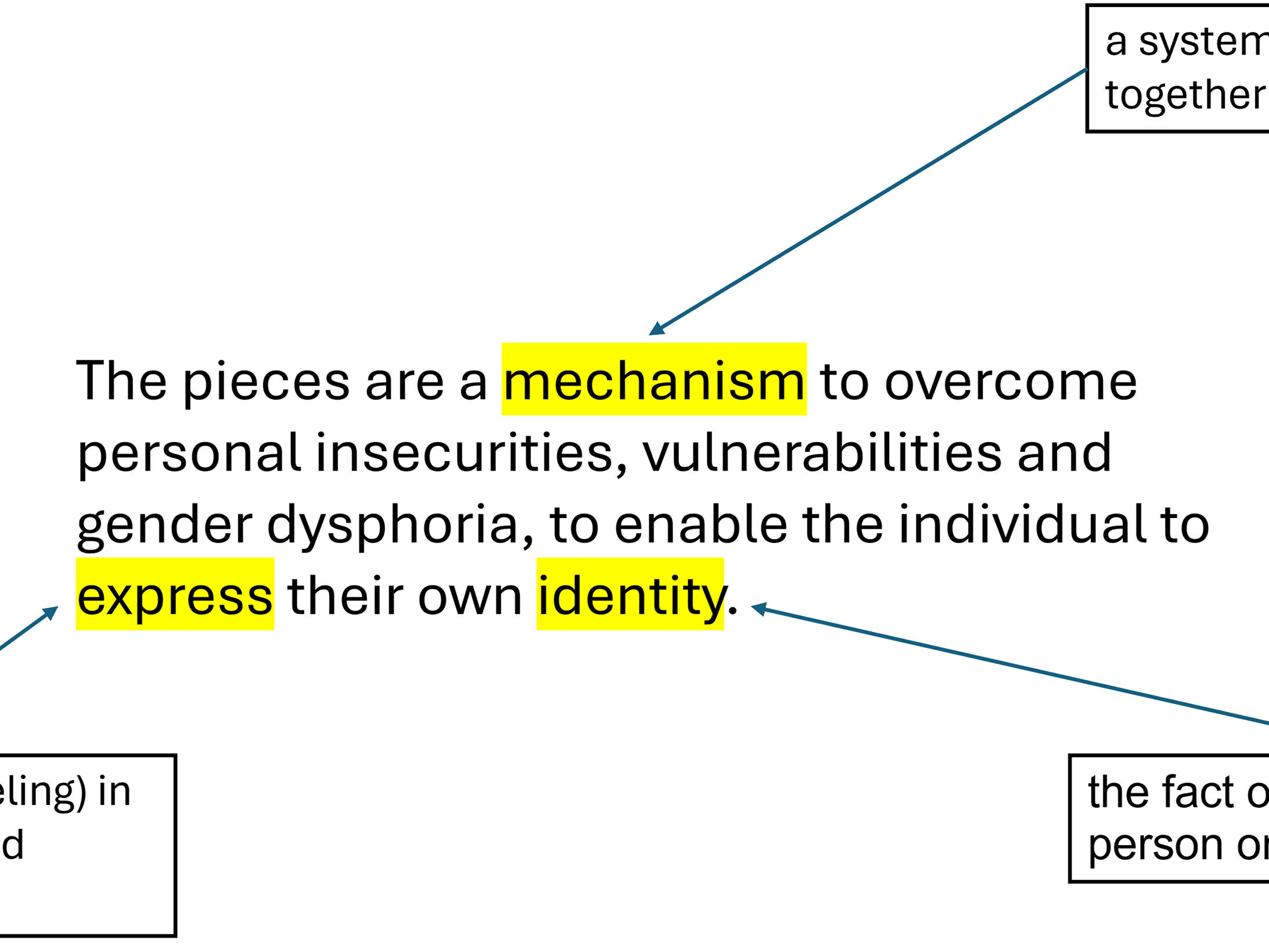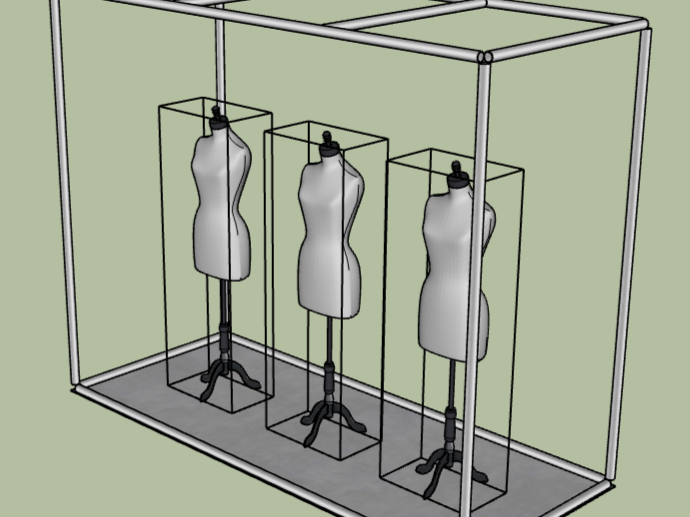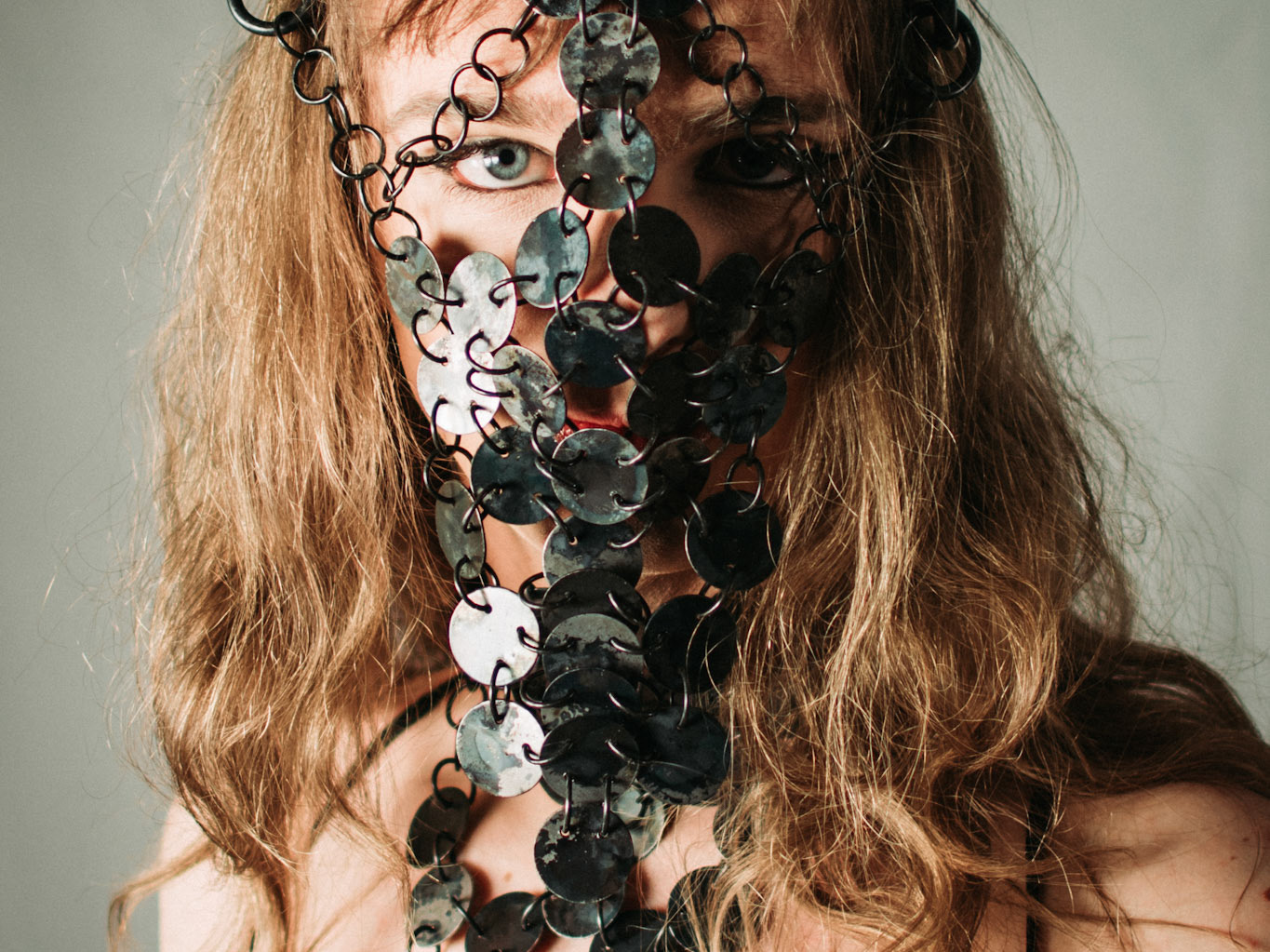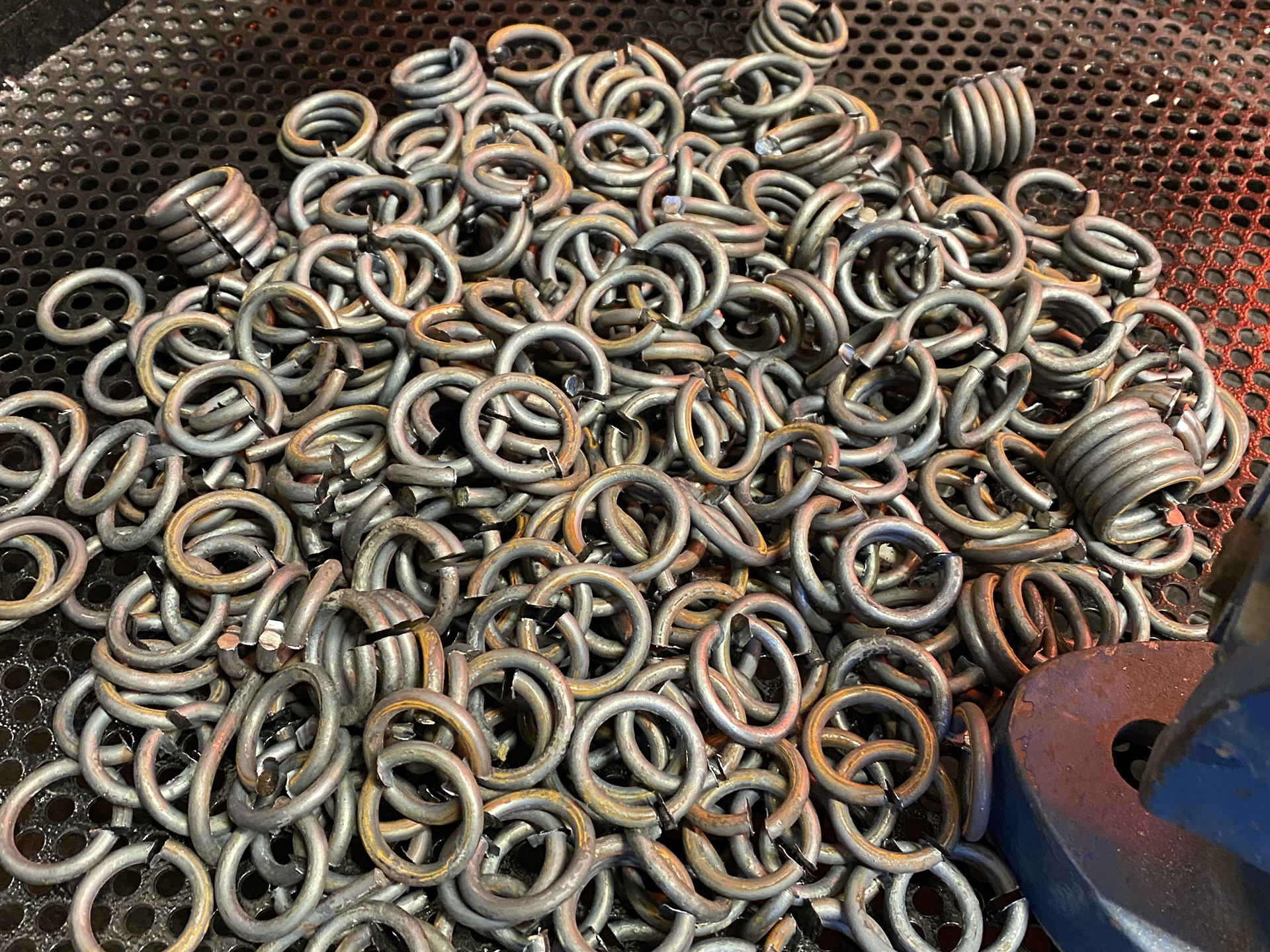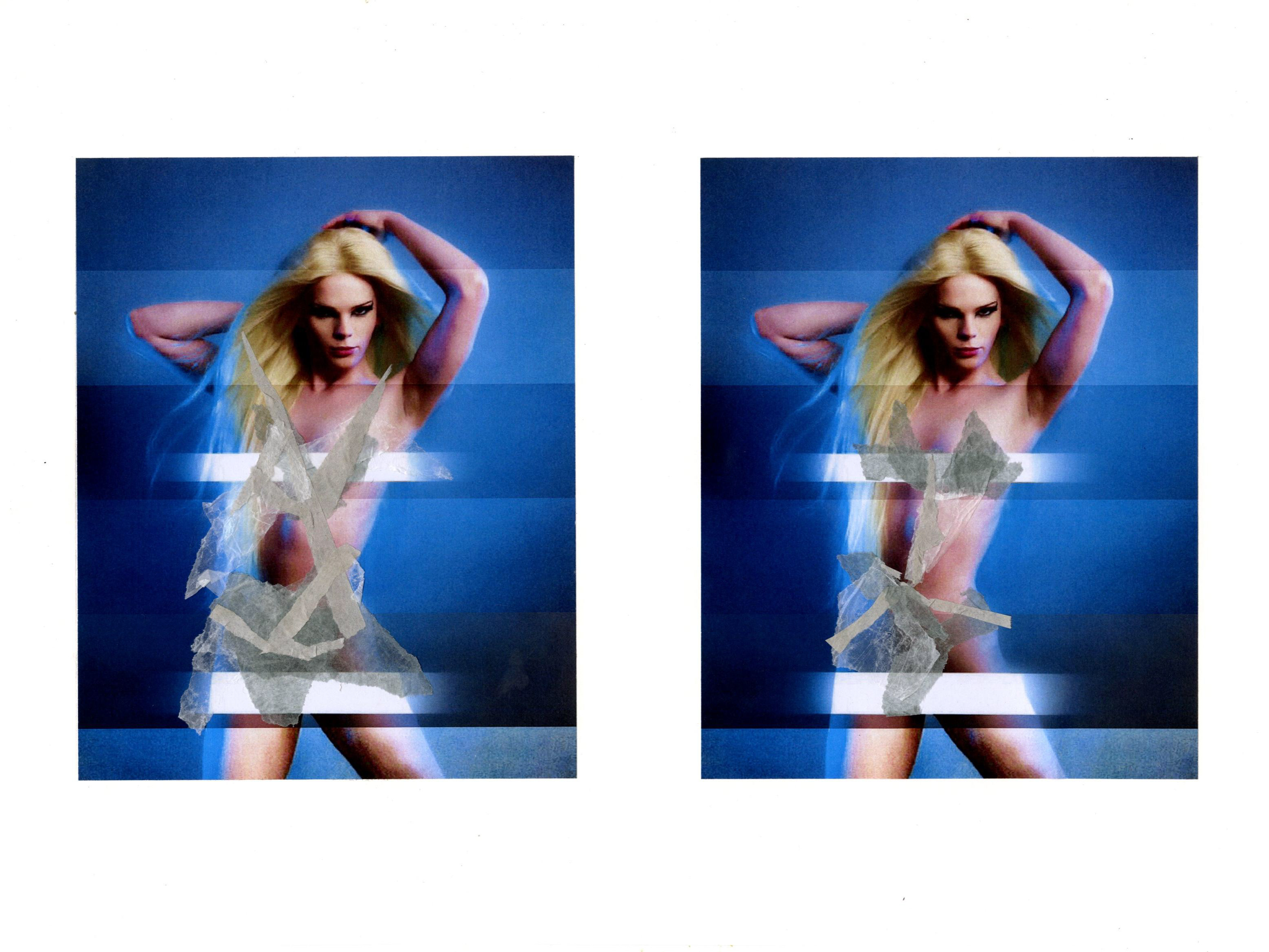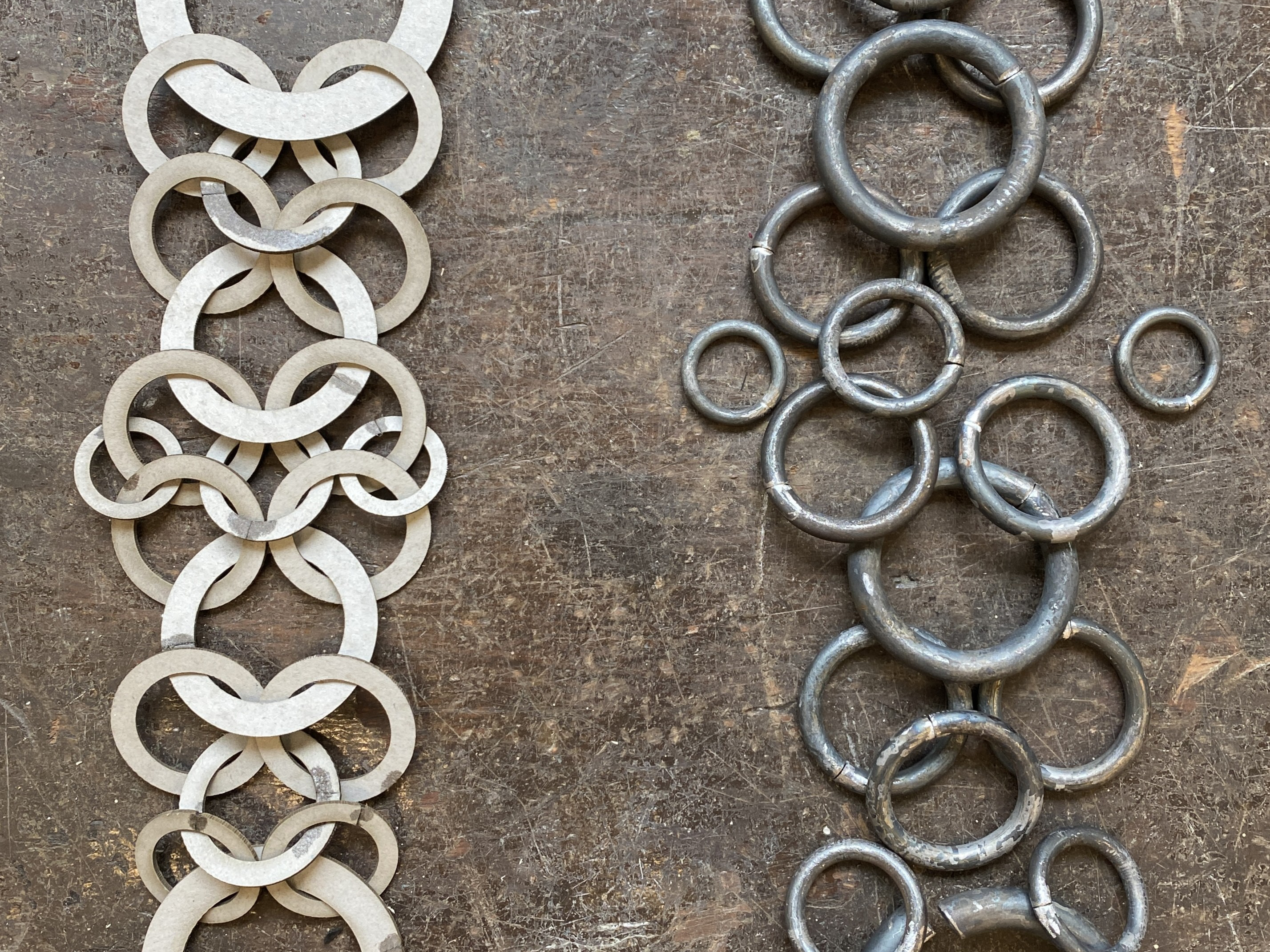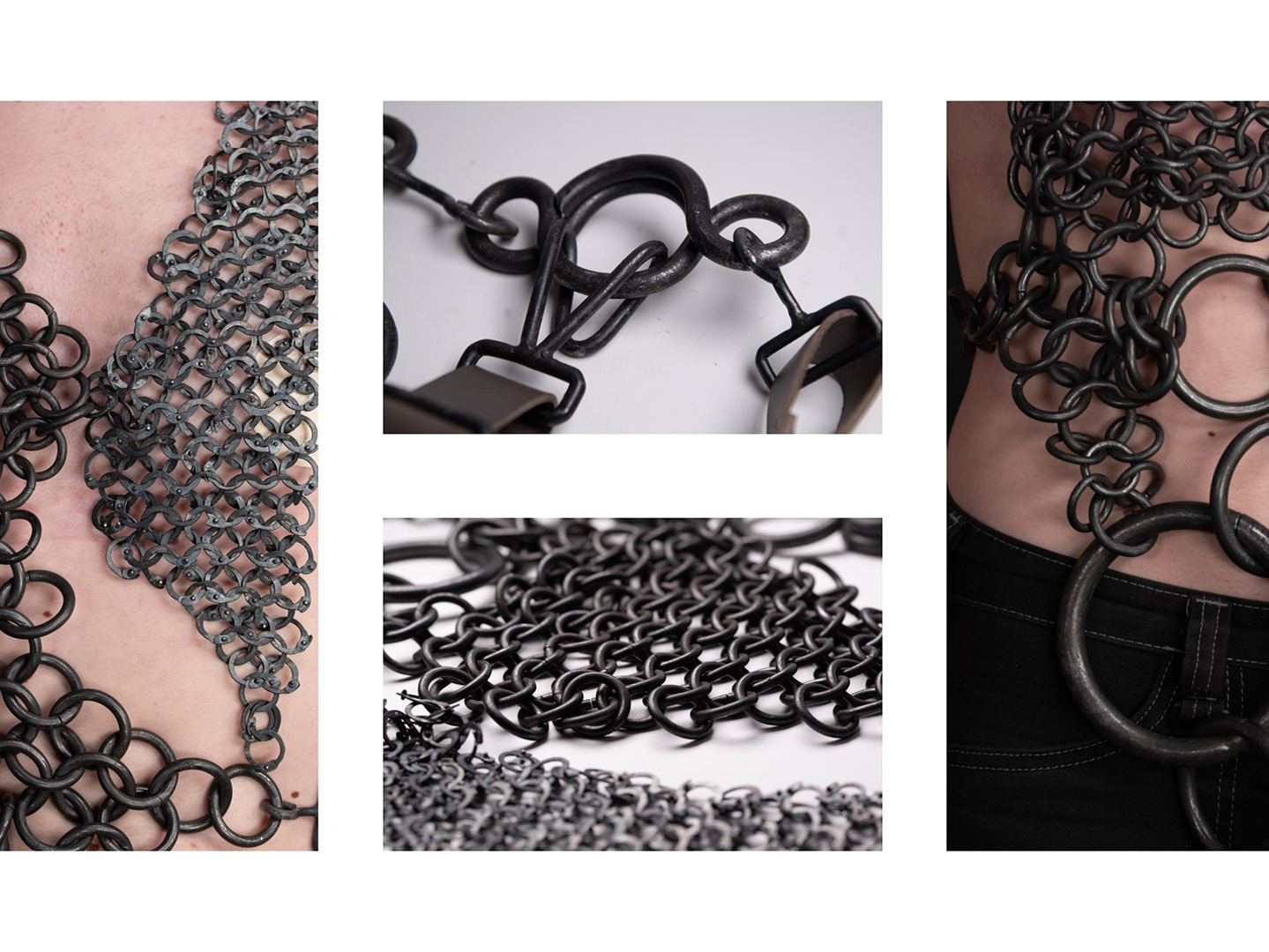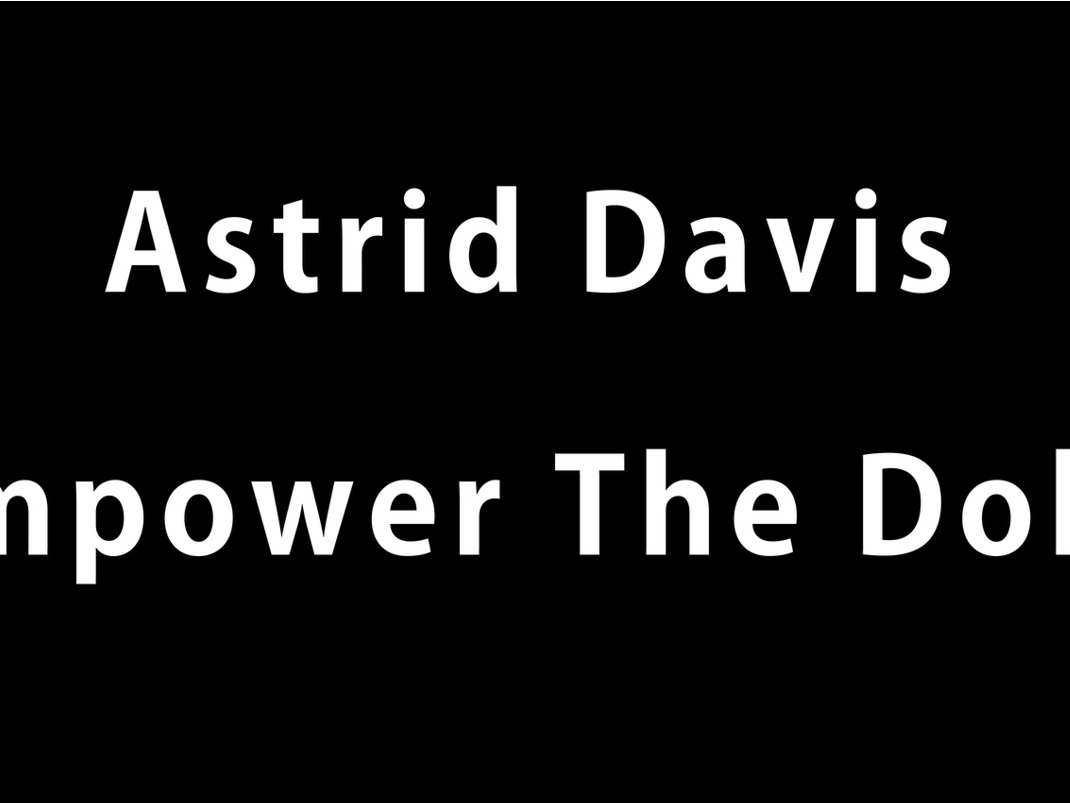Collaboration Questionnaire
1: Select a specific location on the body for the piece to be designed around. This can range from a small body part such as a hand all the way to a broad large area such as the upper body.
So the first question I would say it designed around my like chest and neck.
2: What personal insecurities, vulnerabilities or gender dysphoria do you attribute to this area? Describe in a few sentences or bullet points.
I say my personal insecurities are like my Adams apple. I do not like that, and obviously my down below area.
3: How do you usually manage these insecurities, vulnerabilities or gender dysphoria in your day-to-day life? For example, using baggy clothing or makeup.
Either with necklaces and for down below area, a gaffe, obviously.
4: Can you provide some measurements of the location. For example, clothing size or circumference around the body part.
My neck is about 12 inches and my chest is about 26 inches.
5: How does the art from of drag help you to express yourself and your gender identity?
It just helped me discover who I want to be in life and out of drag as well. It's always just been kind of a stepping stone and a job for me for my true self.
Conclusion from the questionnaire
From Angel's responses, I have decided to incorporate both the neck and crotch regions into a single look. I found her use of layered necklaces intriguing, as they simultaneously distract the viewer’s gaze and serve as adornment. The concept of visual noise and layering as a means to distract and hide dysphoria is compelling, and I want to explore and utilize this idea in the work.
Initial collages
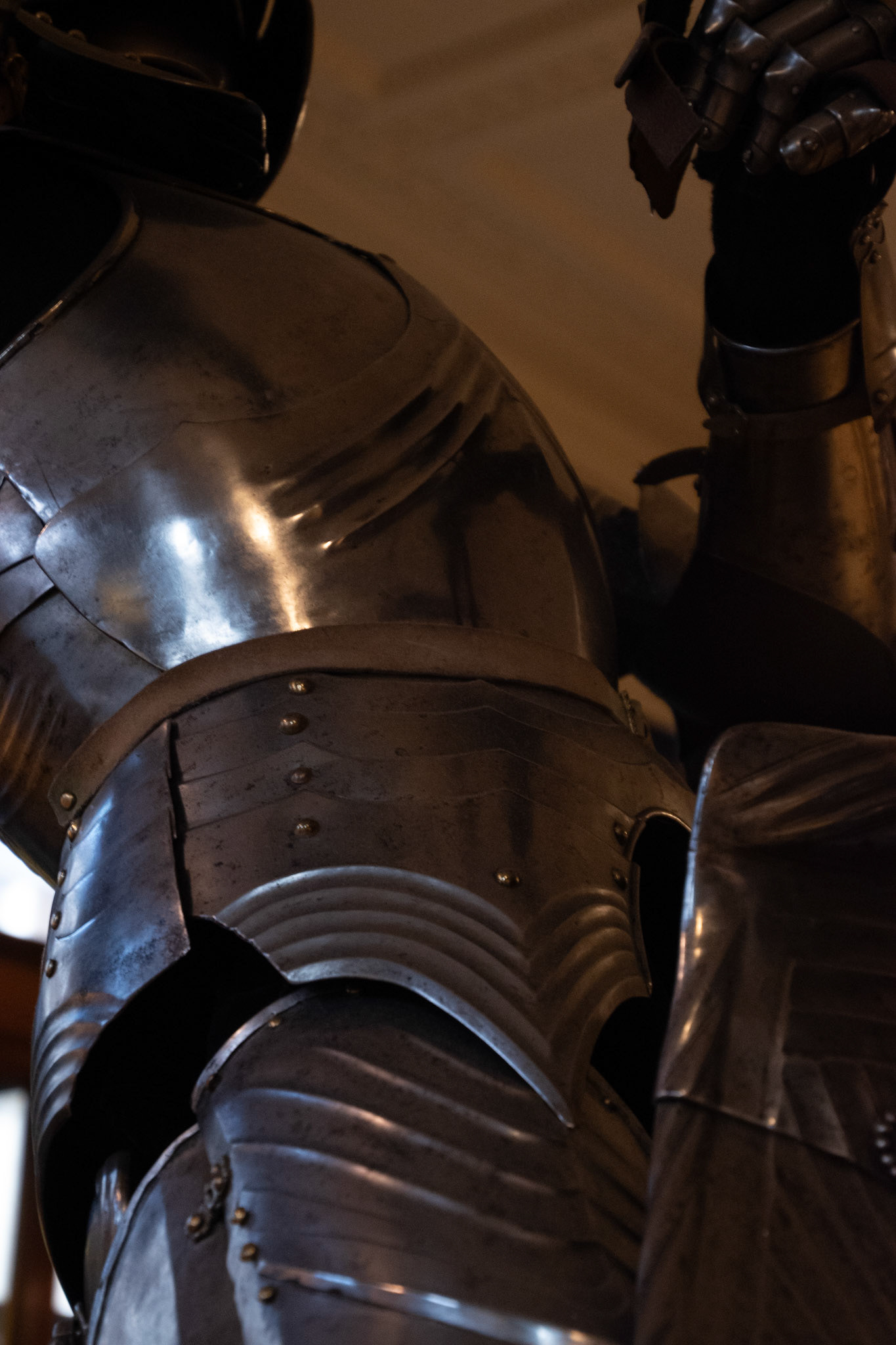
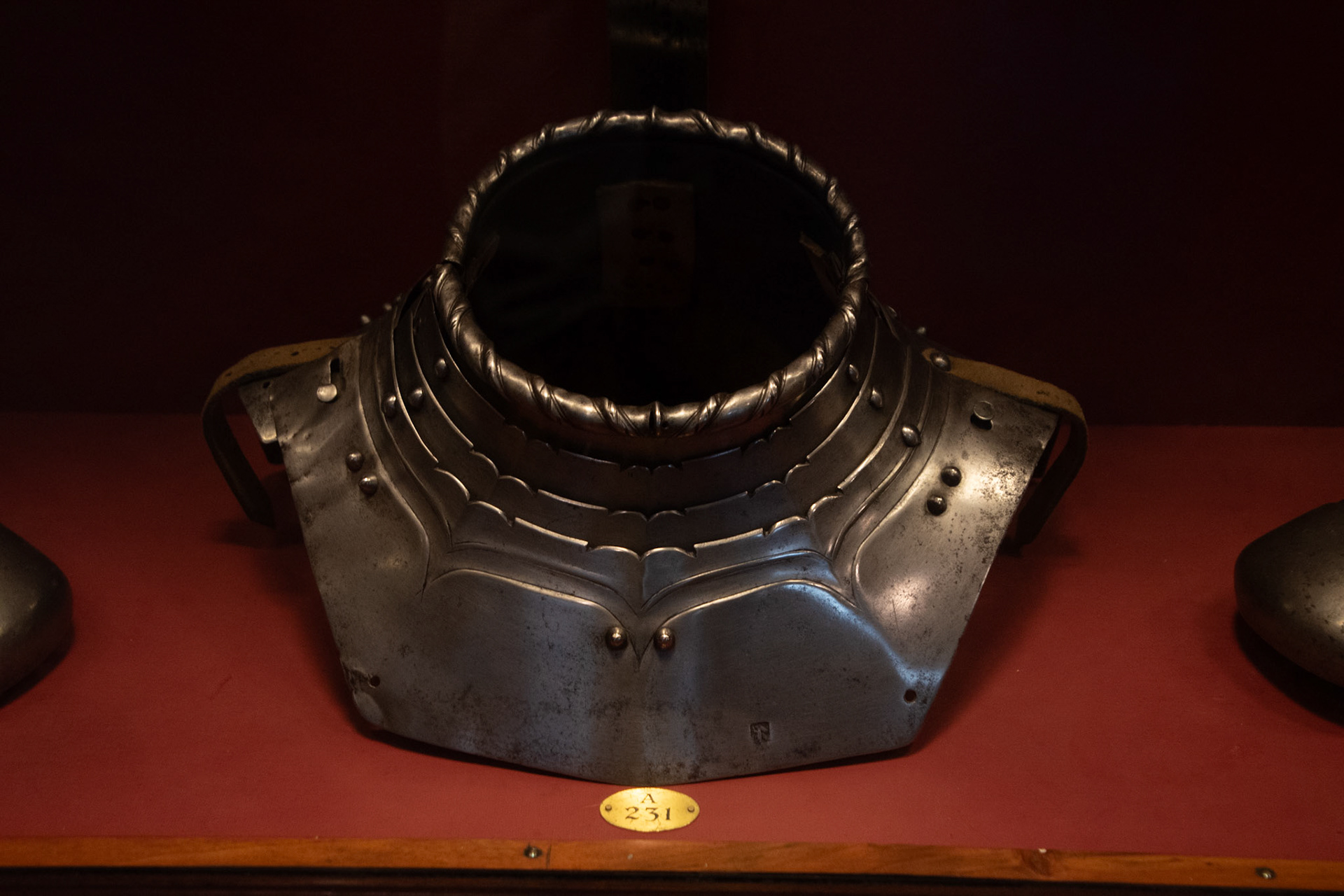
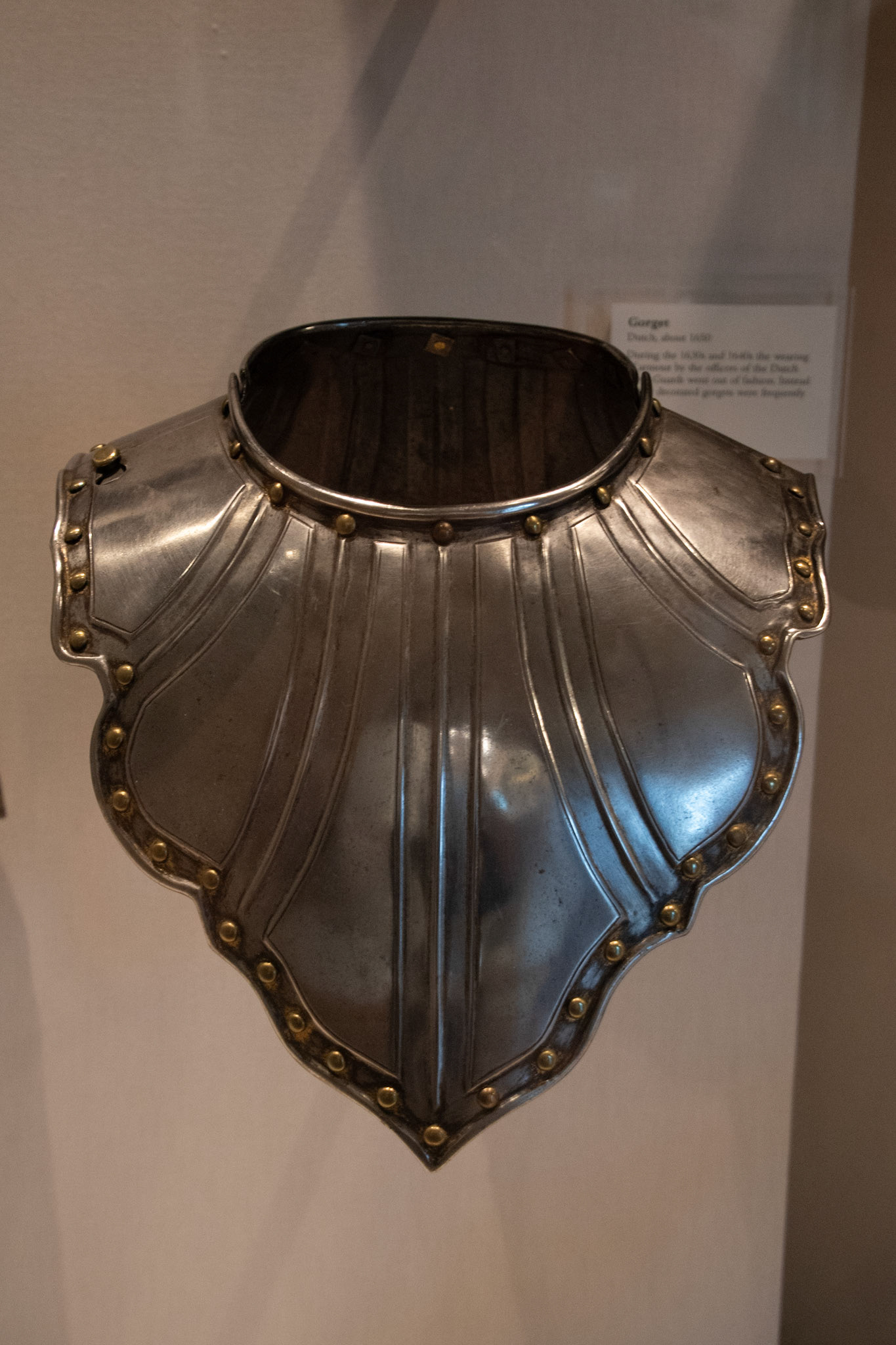

Inspiration imagery from Gallery visits

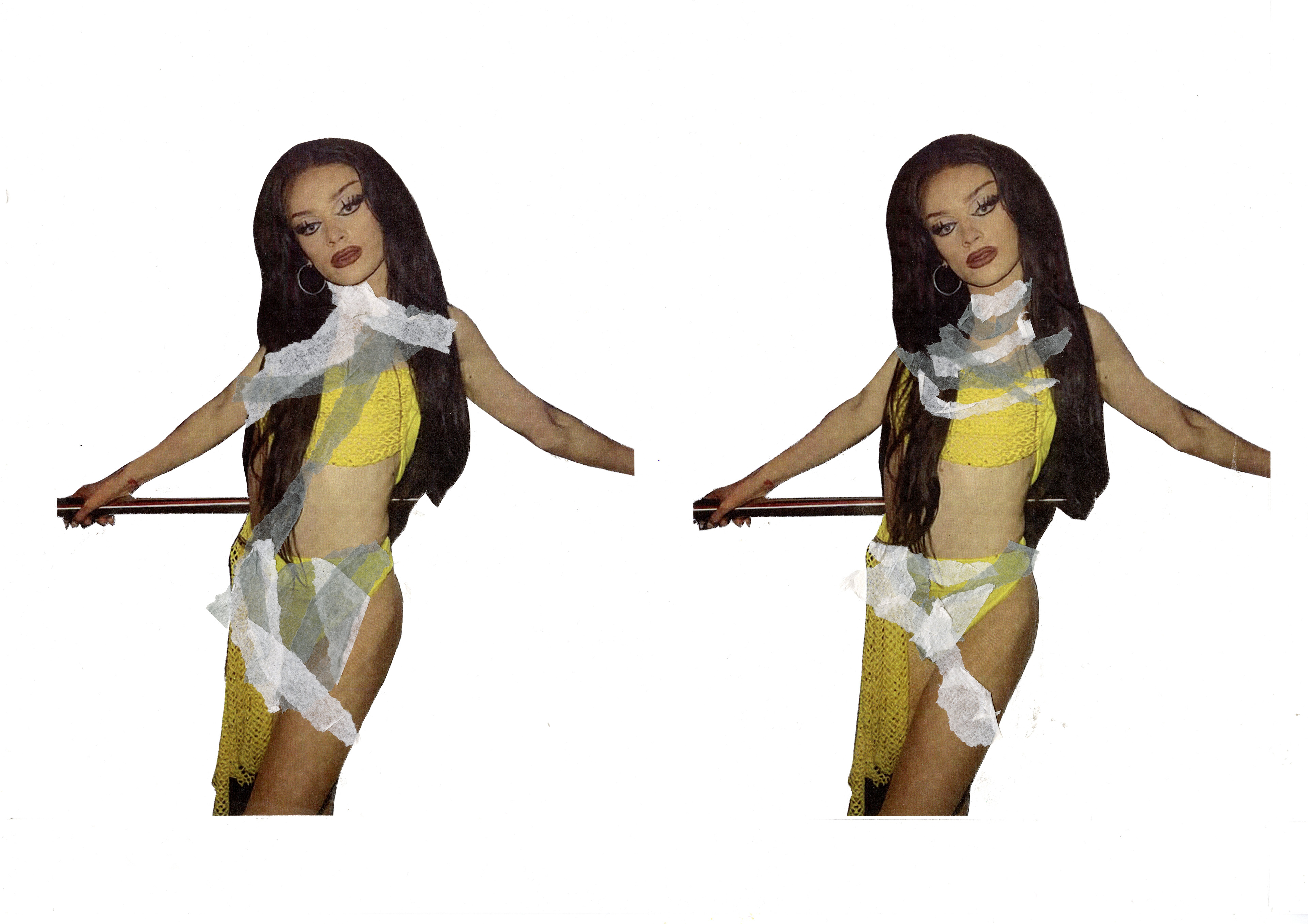
For these collages, I aimed to disperse visual distraction across a larger area than what Angel had identified as insecurities. Additionally, I explored layering and stacking smaller sections of chain to create multiple leading lines. I focused on overlapping these elements over the neck and crotch to build thicker coverage.
Sketches
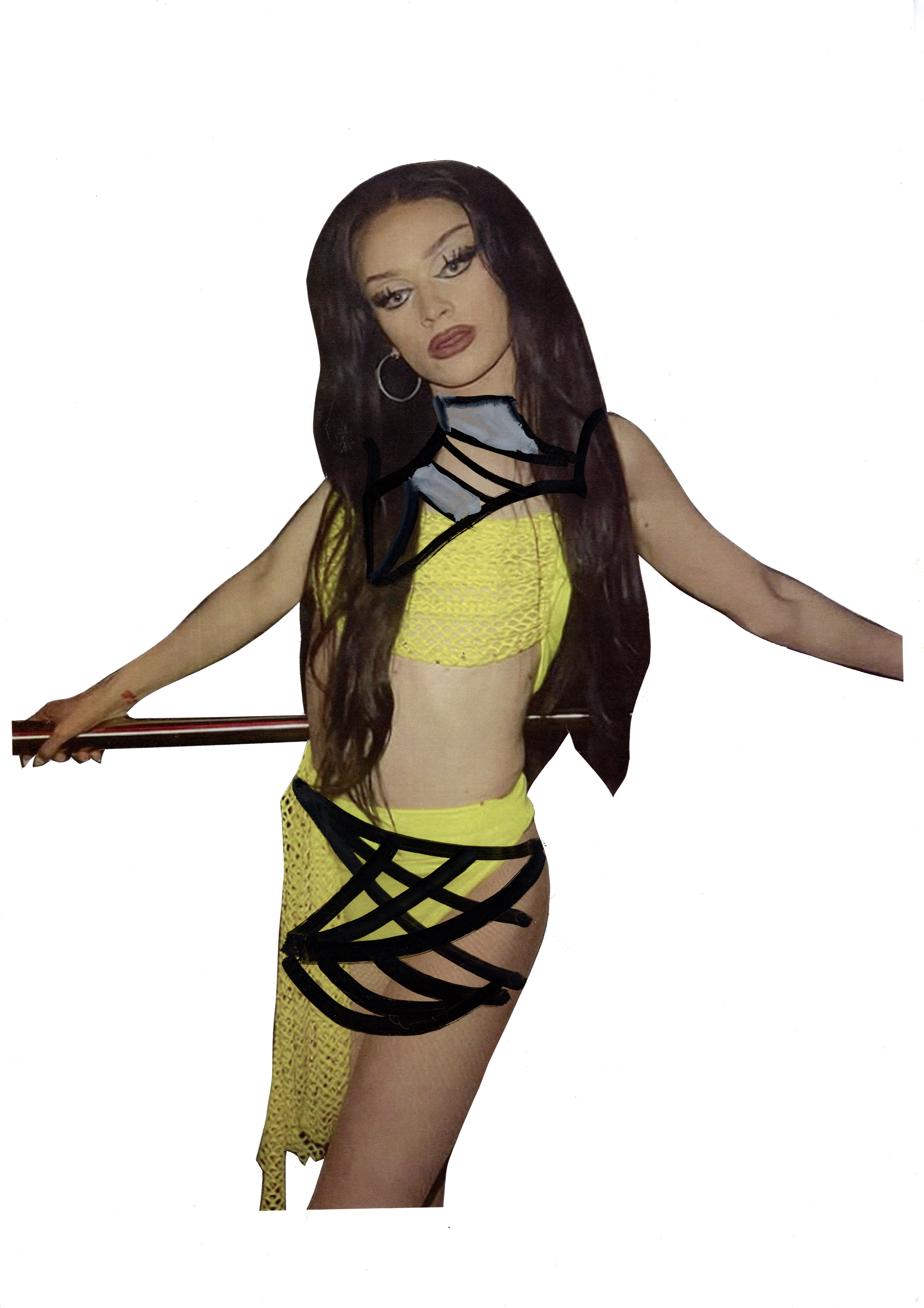

From my collages, I wanted to refine the structure of the piece before modelling. I used large markers to keep the drawing focused purely on form. I believe the necklace in the right image is the stronger design. Its symmetry and curved leading lines draw attention downward and away from the throat, whereas the other design competes for attention across the entire area.
For the crotch section, I find the asymmetry and stacking in the left design more effective. While the coverage needs to be increased, pushing it as far as the right design places too much focus on the crotch. Instead, I think creating an elongated belt or overskirt would be a better approach than enhancing a bikini bottom.
Cardboard Modeling
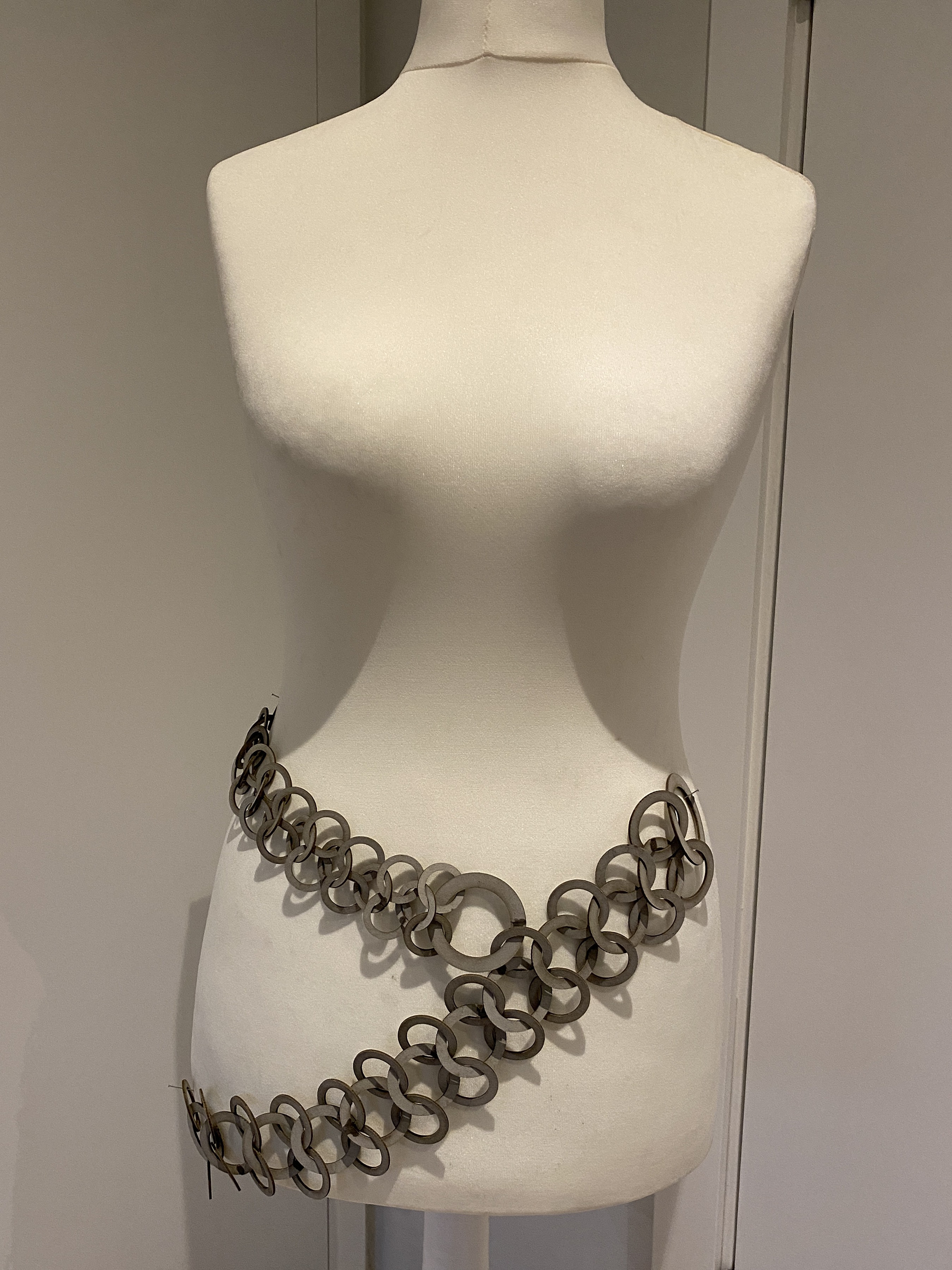
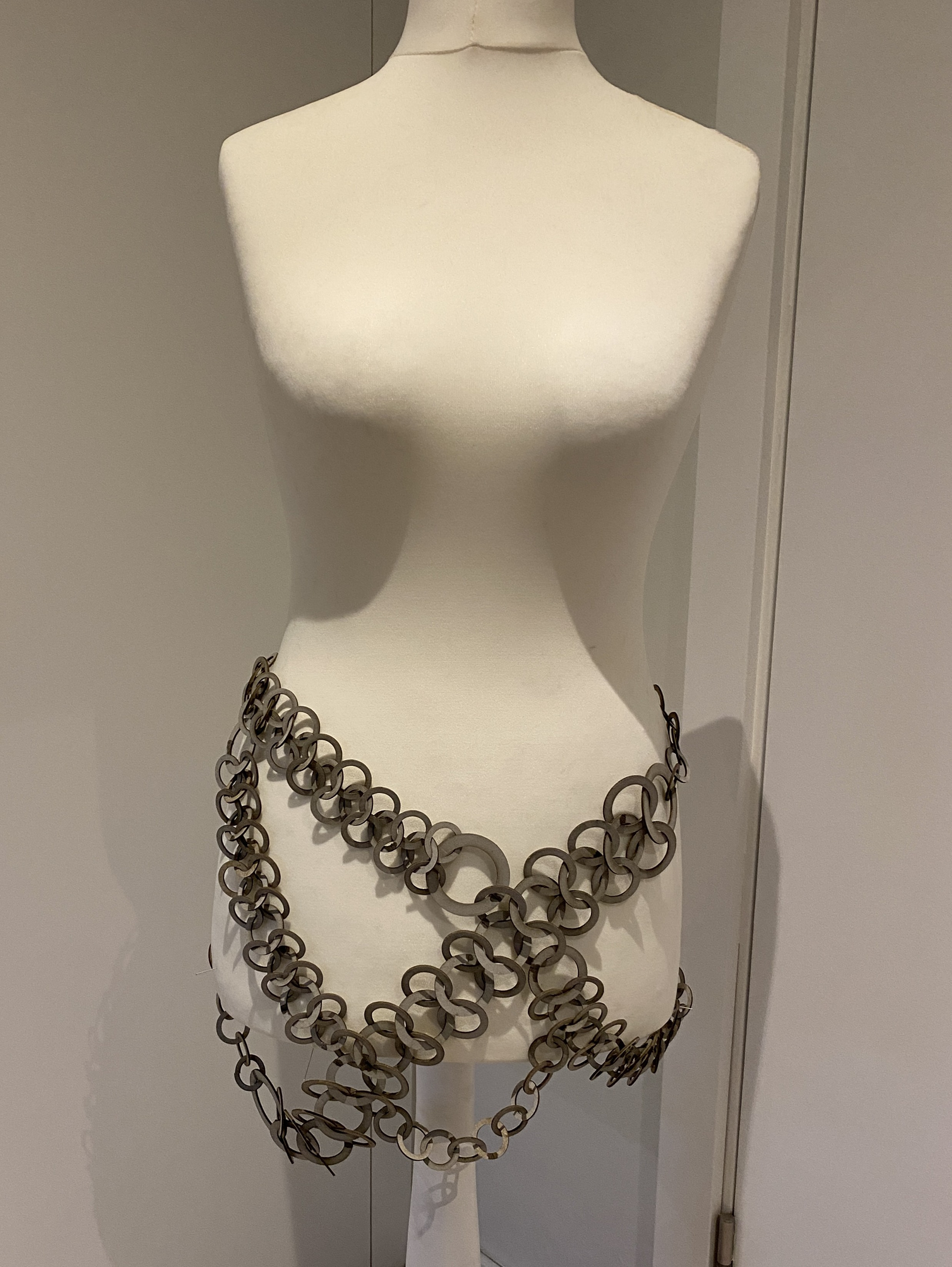
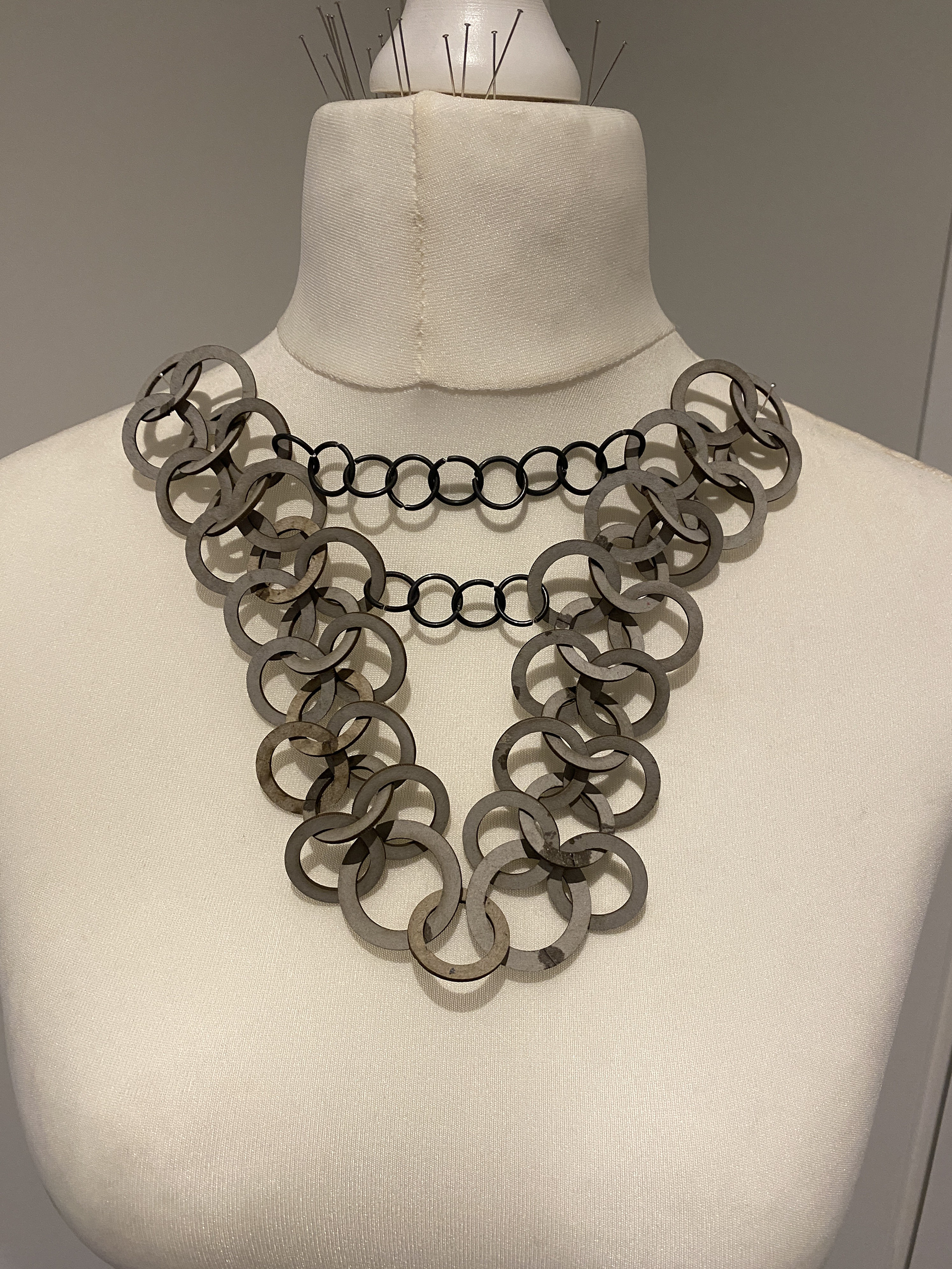
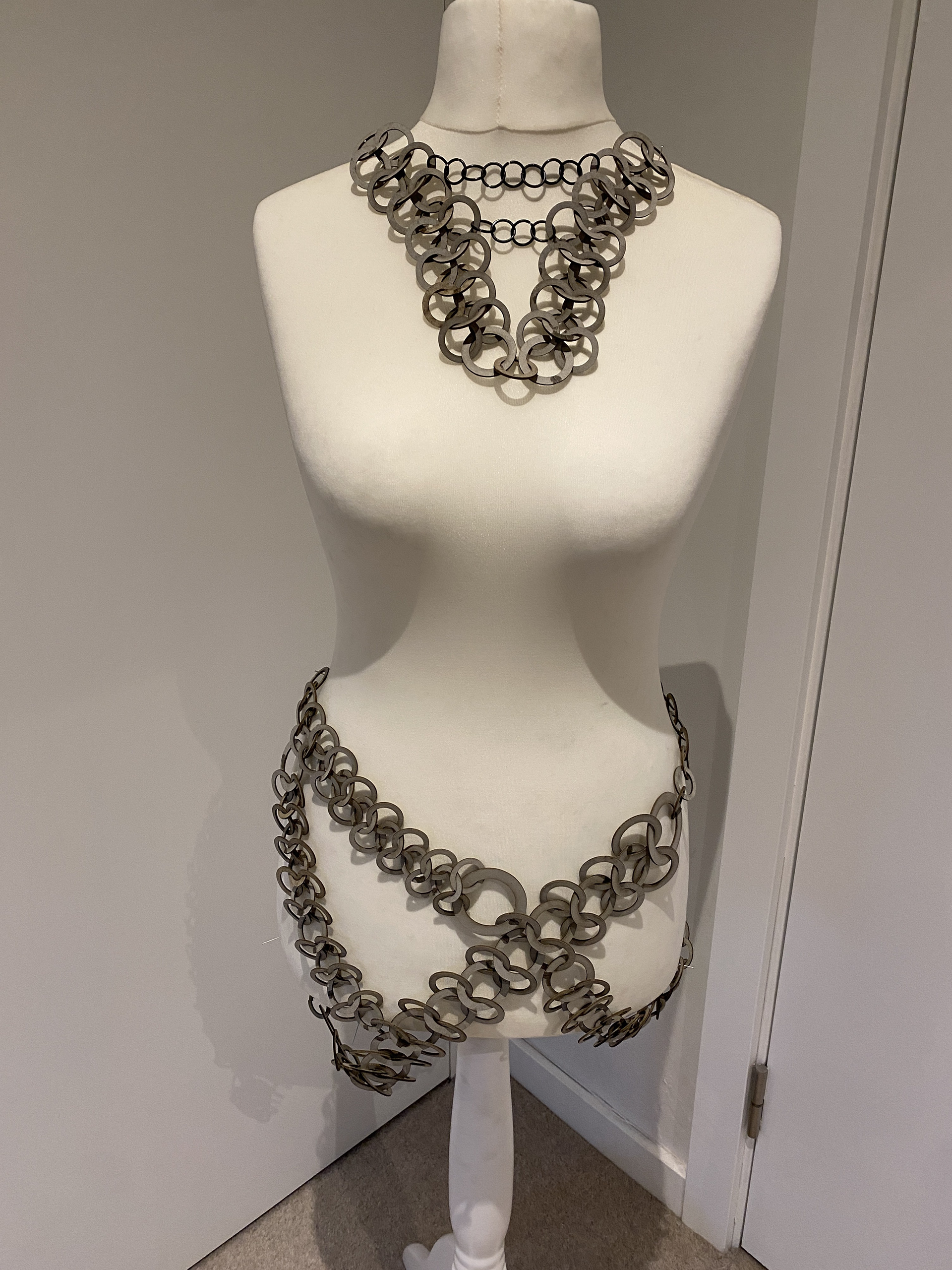
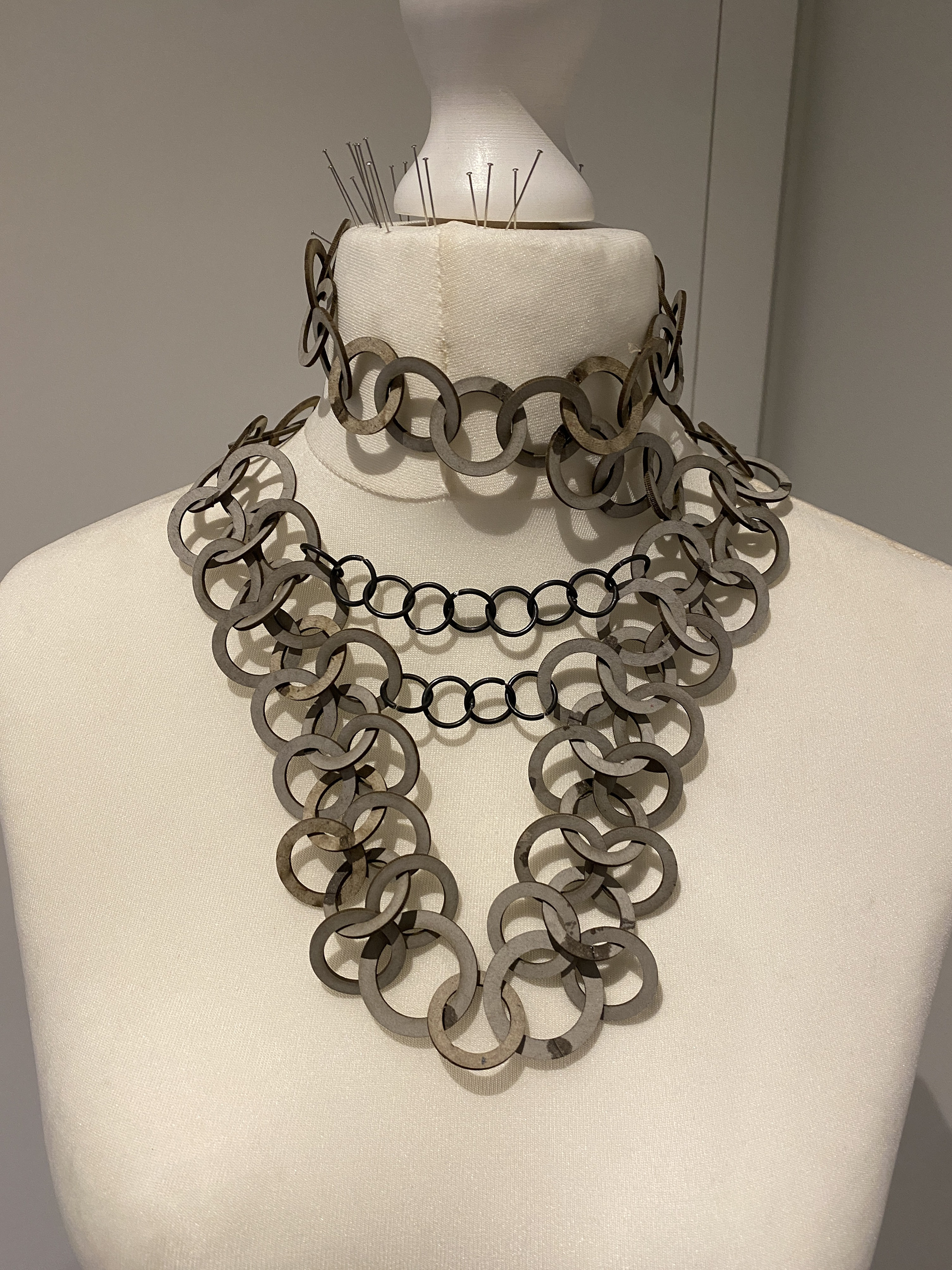
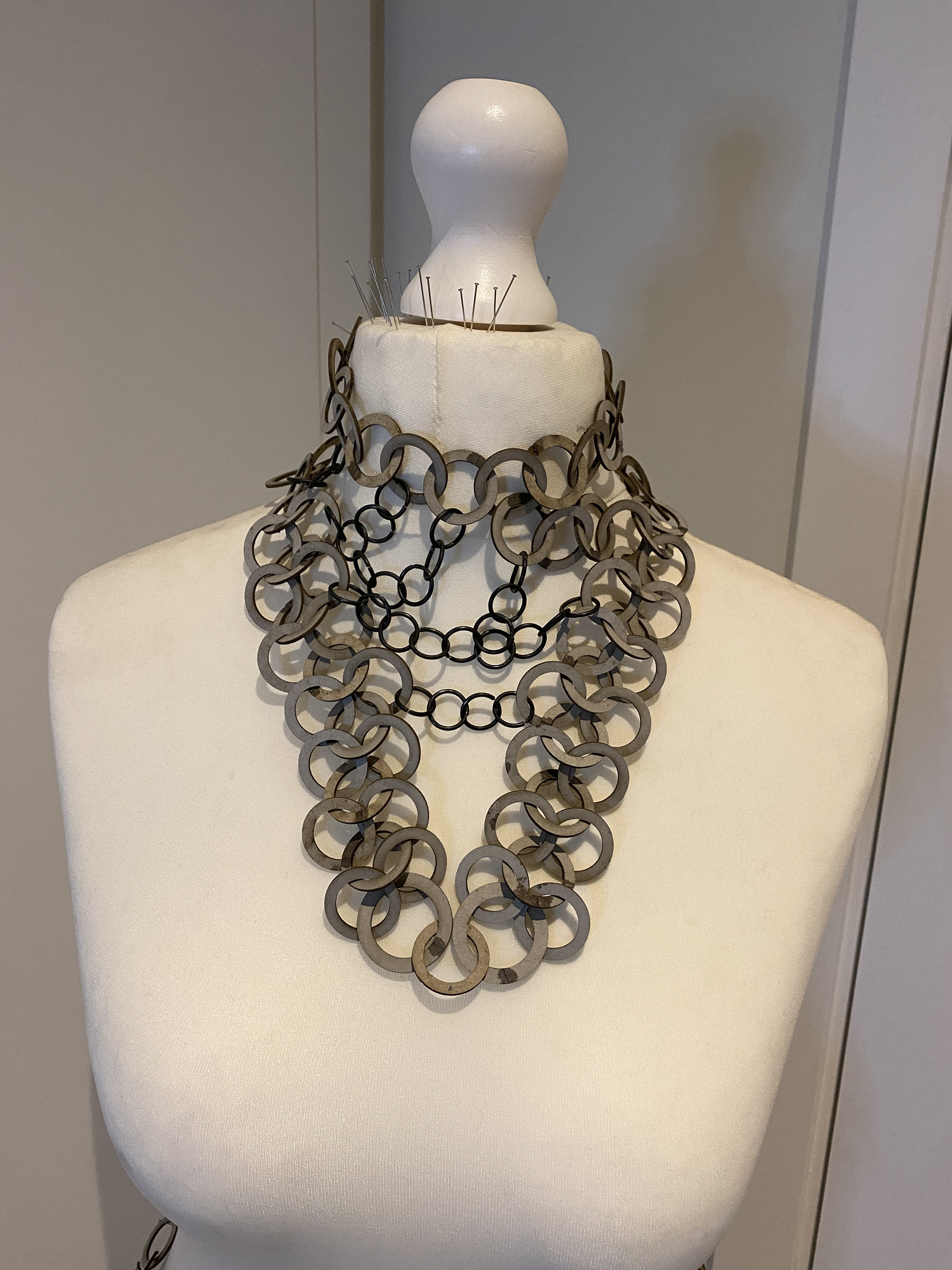
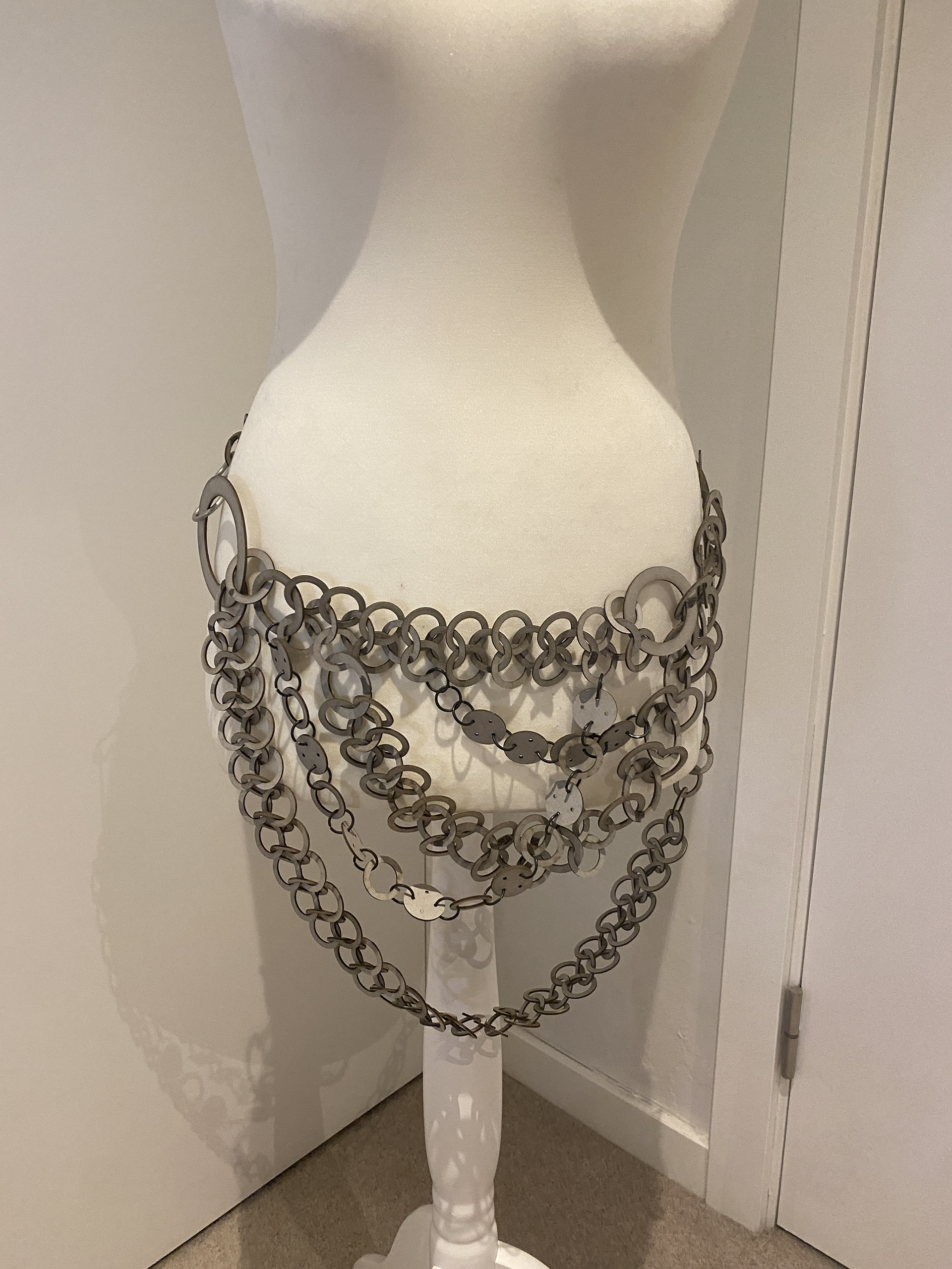
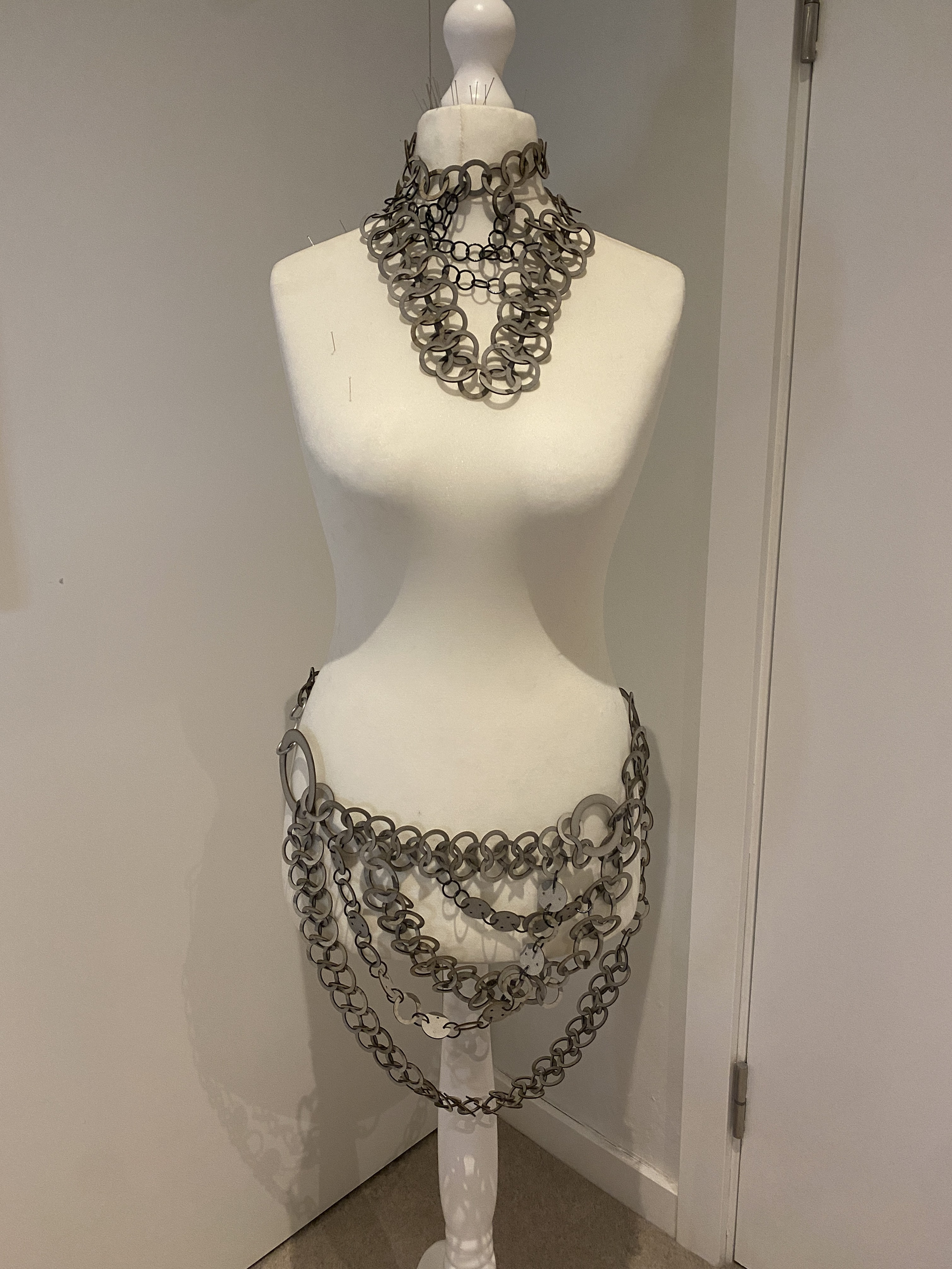
I found modelling this look more challenging than others, as I had to balance two pieces at once. The necklace, however, was easier to construct. I worked with a symmetrical length of chain and used smaller 1.6mm links to pull it together, adjusting the drape to create the desired curves. I wanted this element of the design to be highly uniform, forming a gentle, flowing V-shape that directed the eyes away from the neck. I then began layering sections to build up coverage over the Adam’s apple. This proved difficult, as adding too much weight or bulk risked emphasizing the insecurity rather than concealing it. I overcame this by using a larger primary chain alongside multiple smaller chains to generate visual noise.
Designing the overskirt presented several challenges. Unlike the pieces I made for myself, I wanted to focus on strips rather than blocks of chain, aiming to enhance the visual noise and guide the viewer’s gaze around the body. Balancing coverage with weight was critical, as I intended the piece to rest on the hips without additional supporting straps.
Working with the dress mannequin was both beneficial and challenging. It was useful for pinning the pieces in place and pulling the chain into the desired positions before securing it. However, the lack of legs and lower-body structure made visualizing the overskirt section difficult. I found that refining the piece to a stage where I could wear it and adjust it directly on my body made the process much easier.
Making the piece


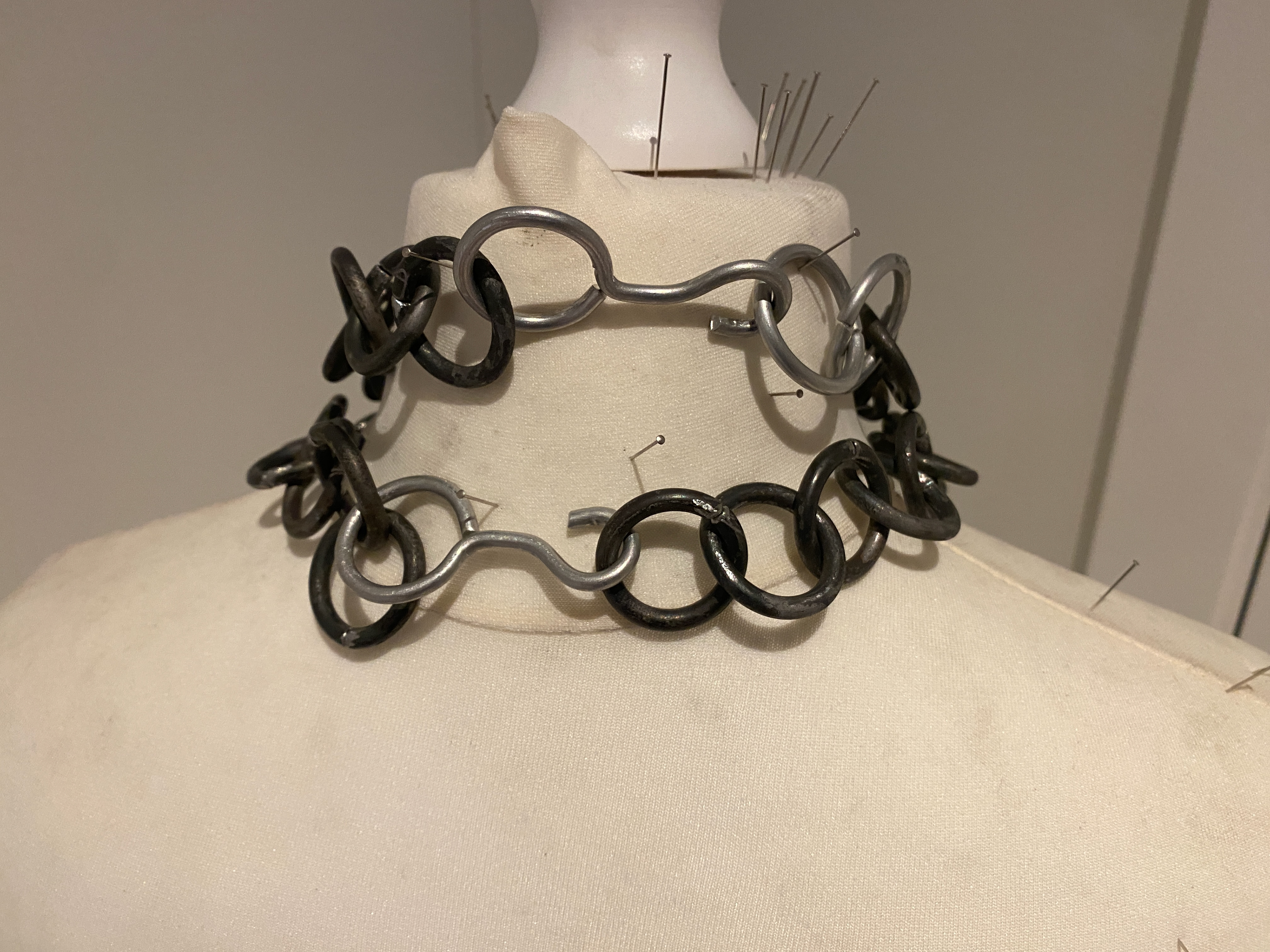

To make the necklace, I repeated my process of producing the links and weaved them together, using the grey board model as a reference. I then needed to determine how the piece would close at the back of the neck while securing the front over the Adam’s apple.
Initially, I planned to use two hooks, but this design tended to slip around the neck when the wearer moved. To resolve this, I locked the top and bottom sections in place with a bar on either side of the clasp. I then connected these bars using a single central hook and eye with an adjustable chain.

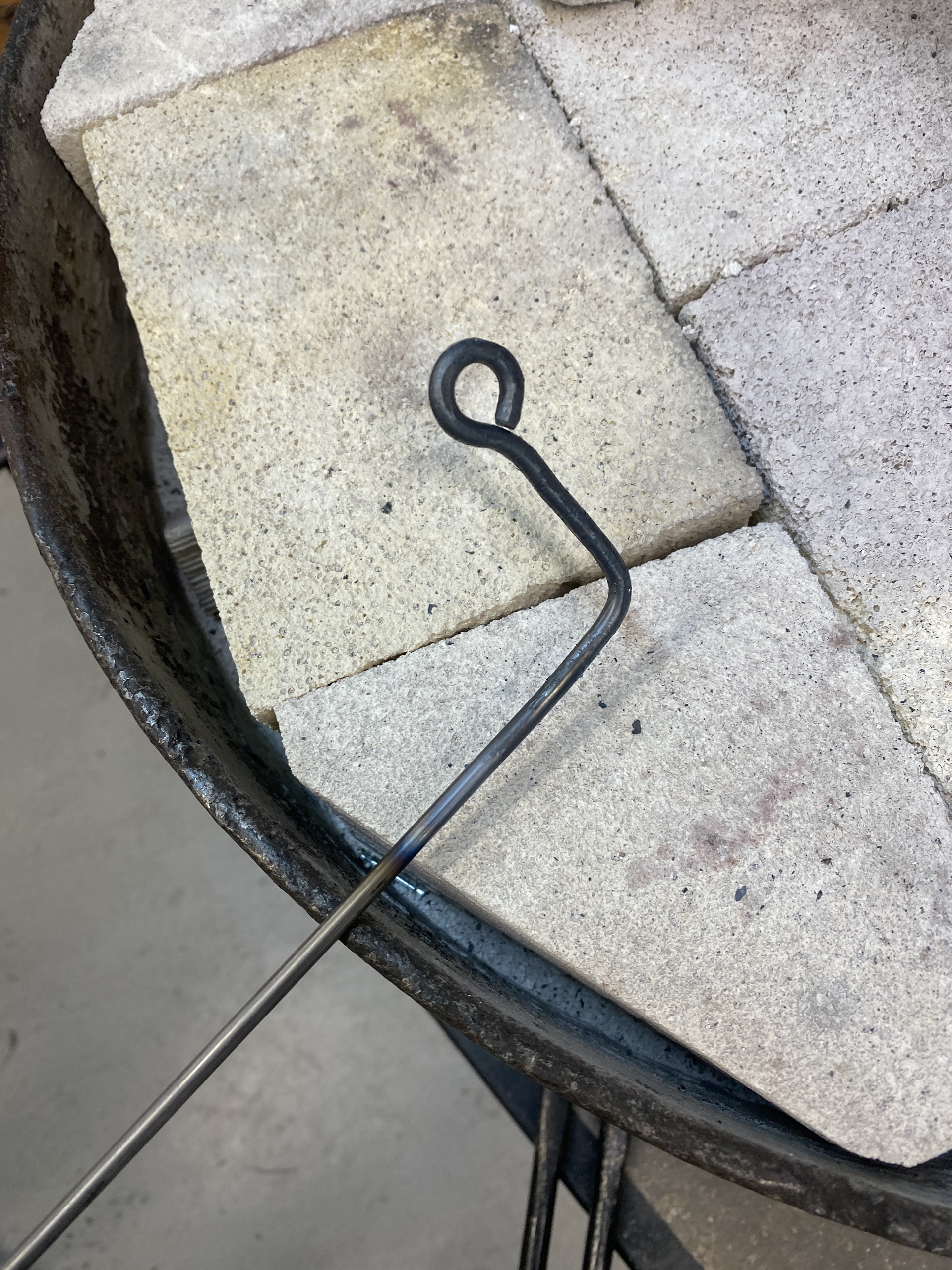
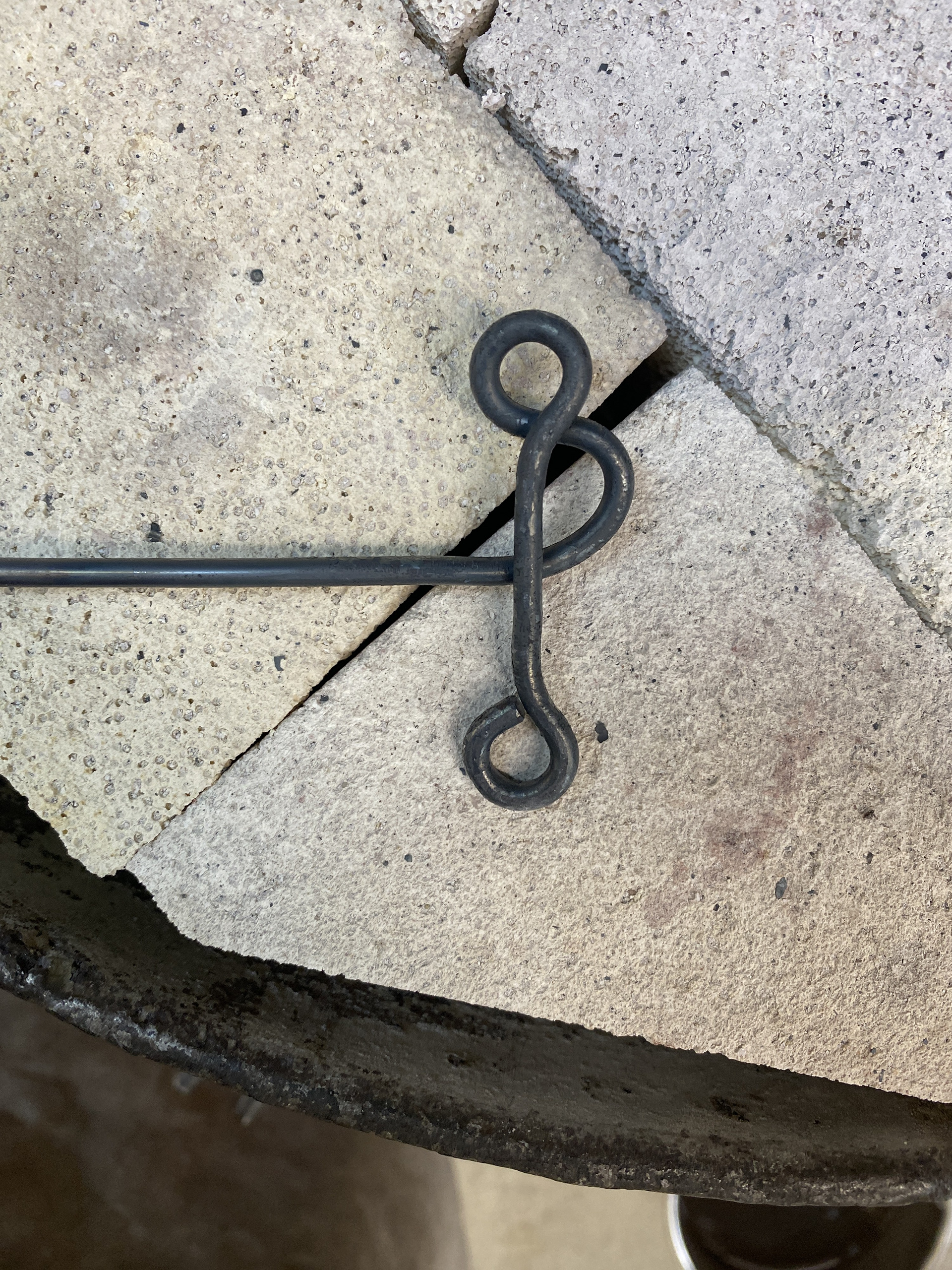
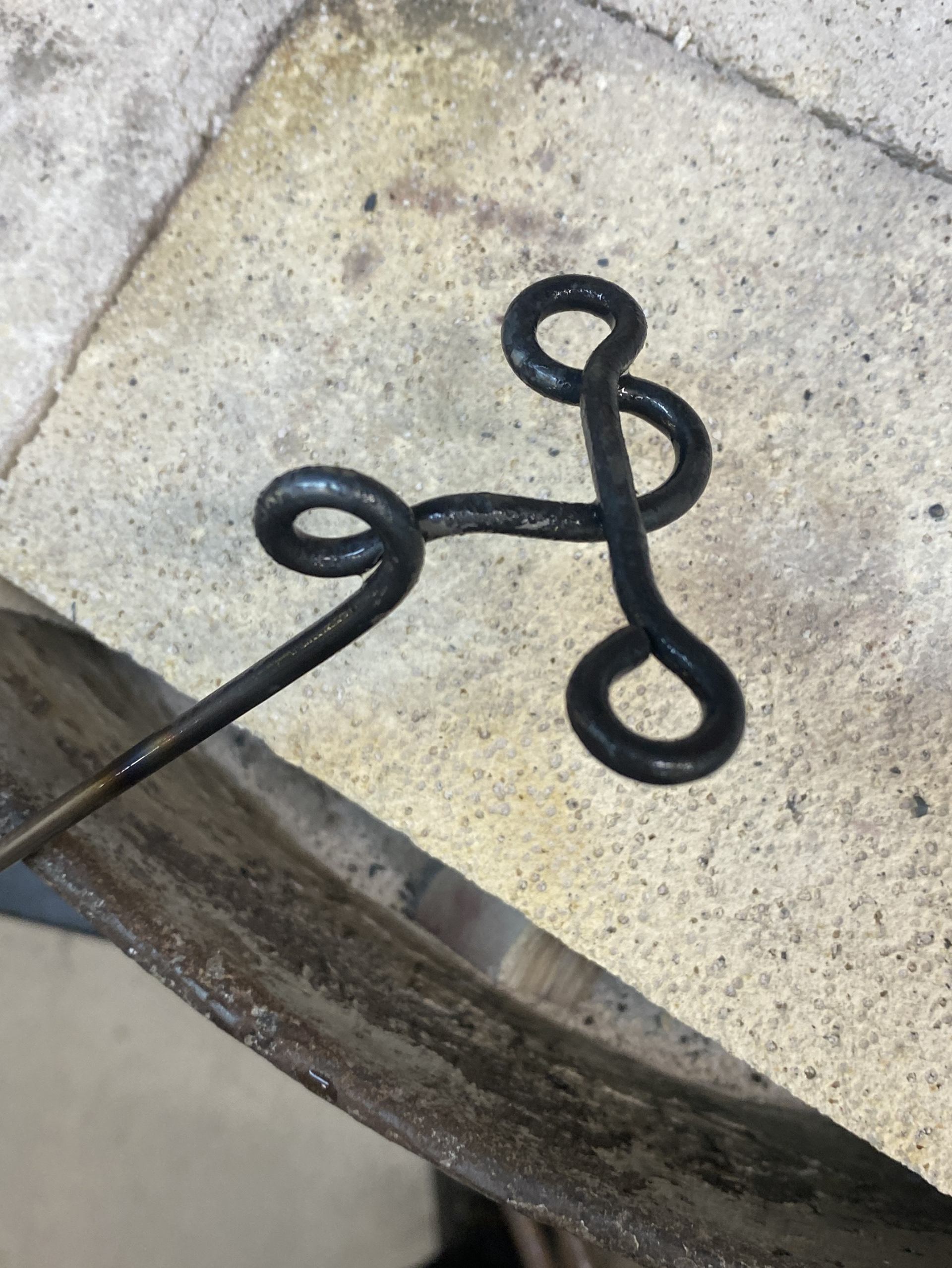
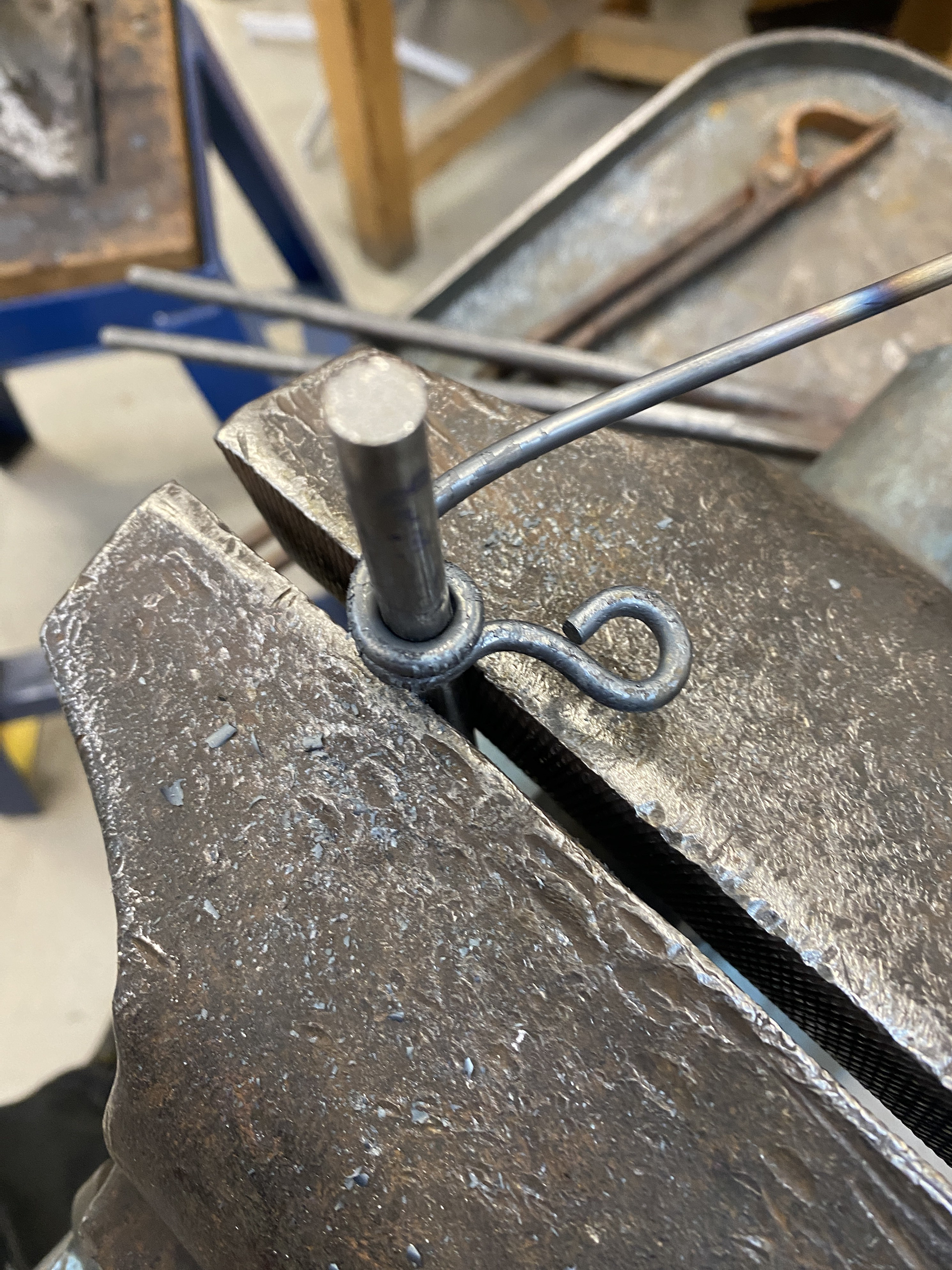
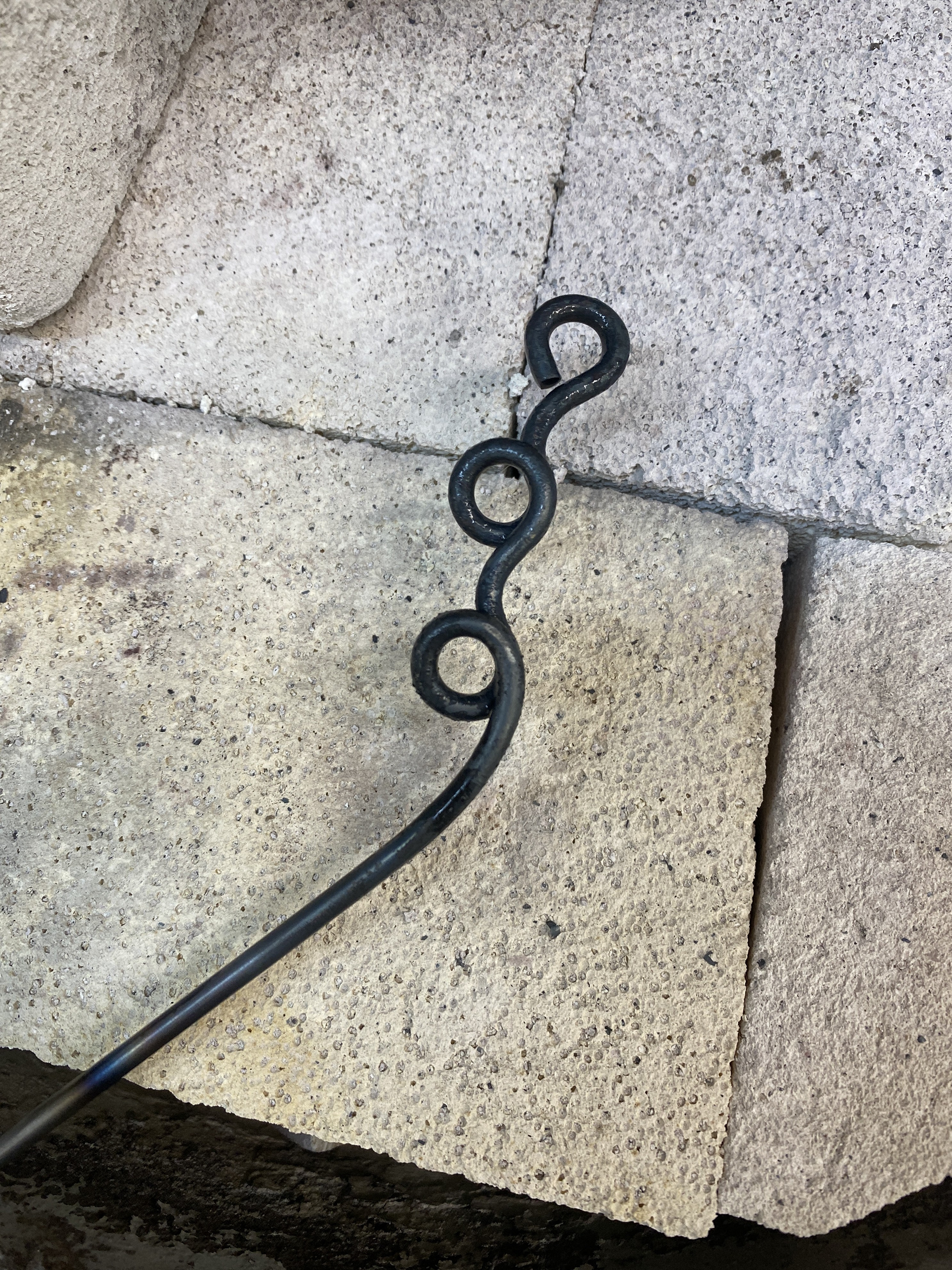
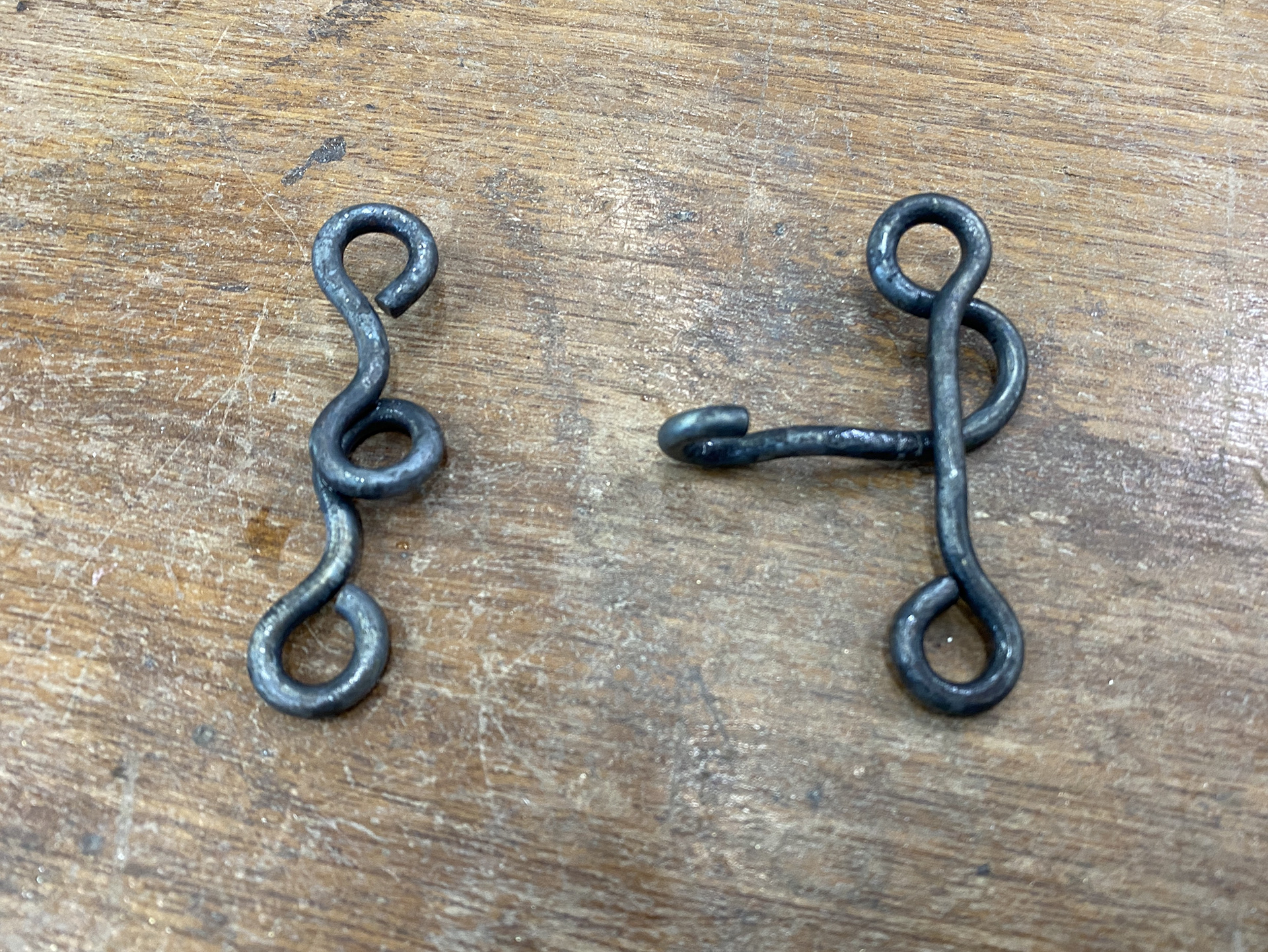
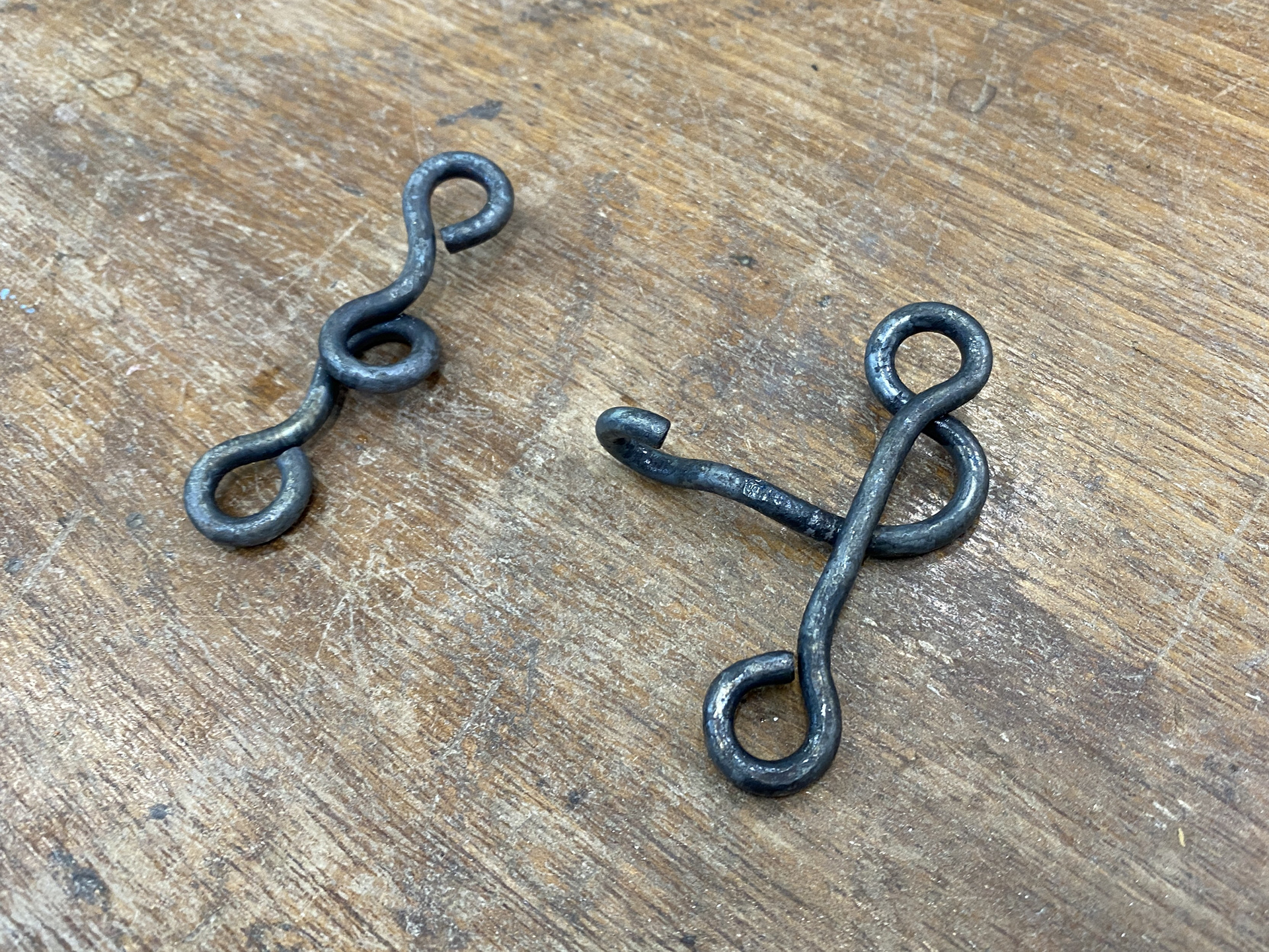

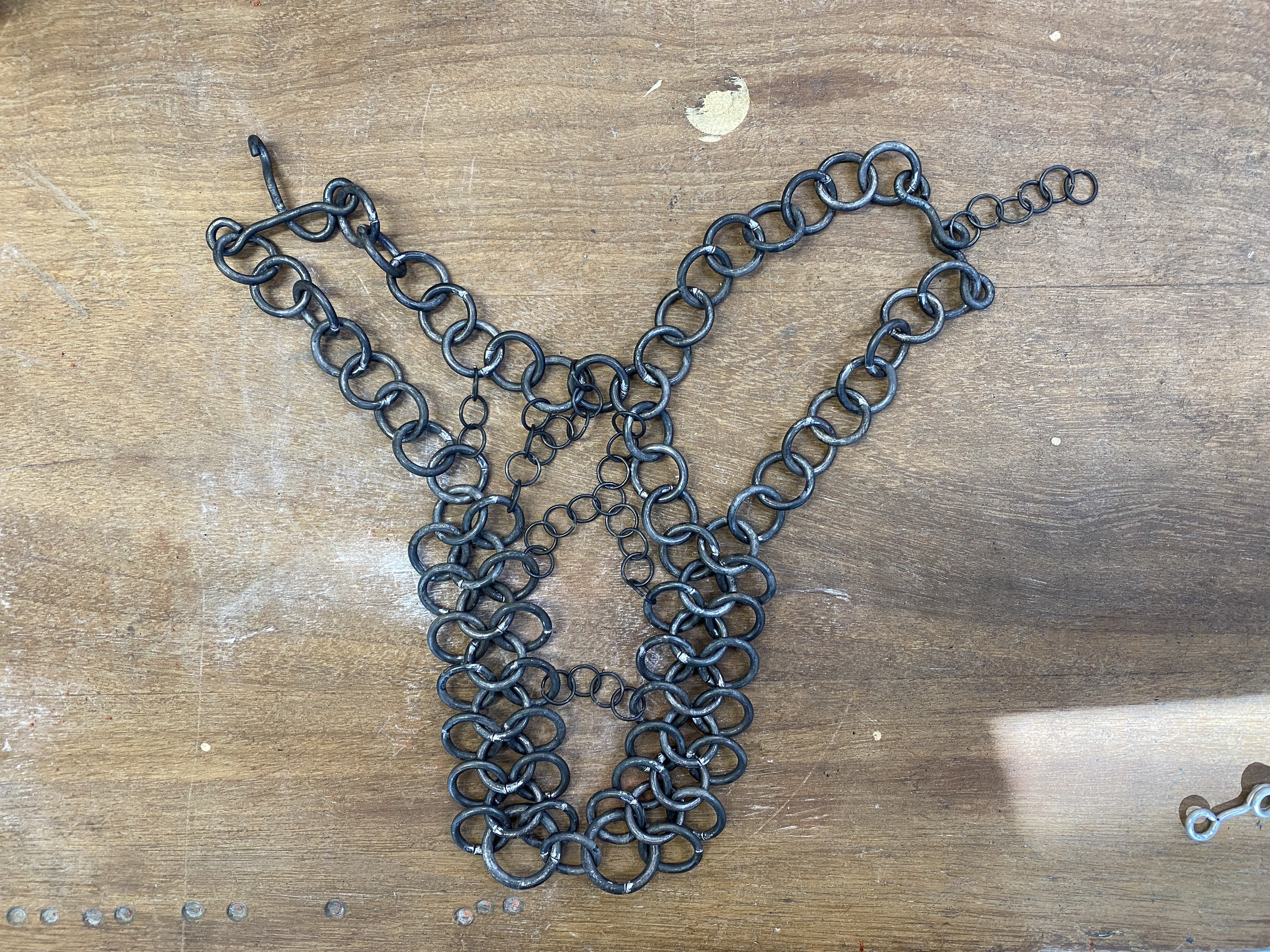
To make the clasp, I used a 4mm steel rod and applied the same manufacturing techniques I used to produce the clasp for my own necklace.
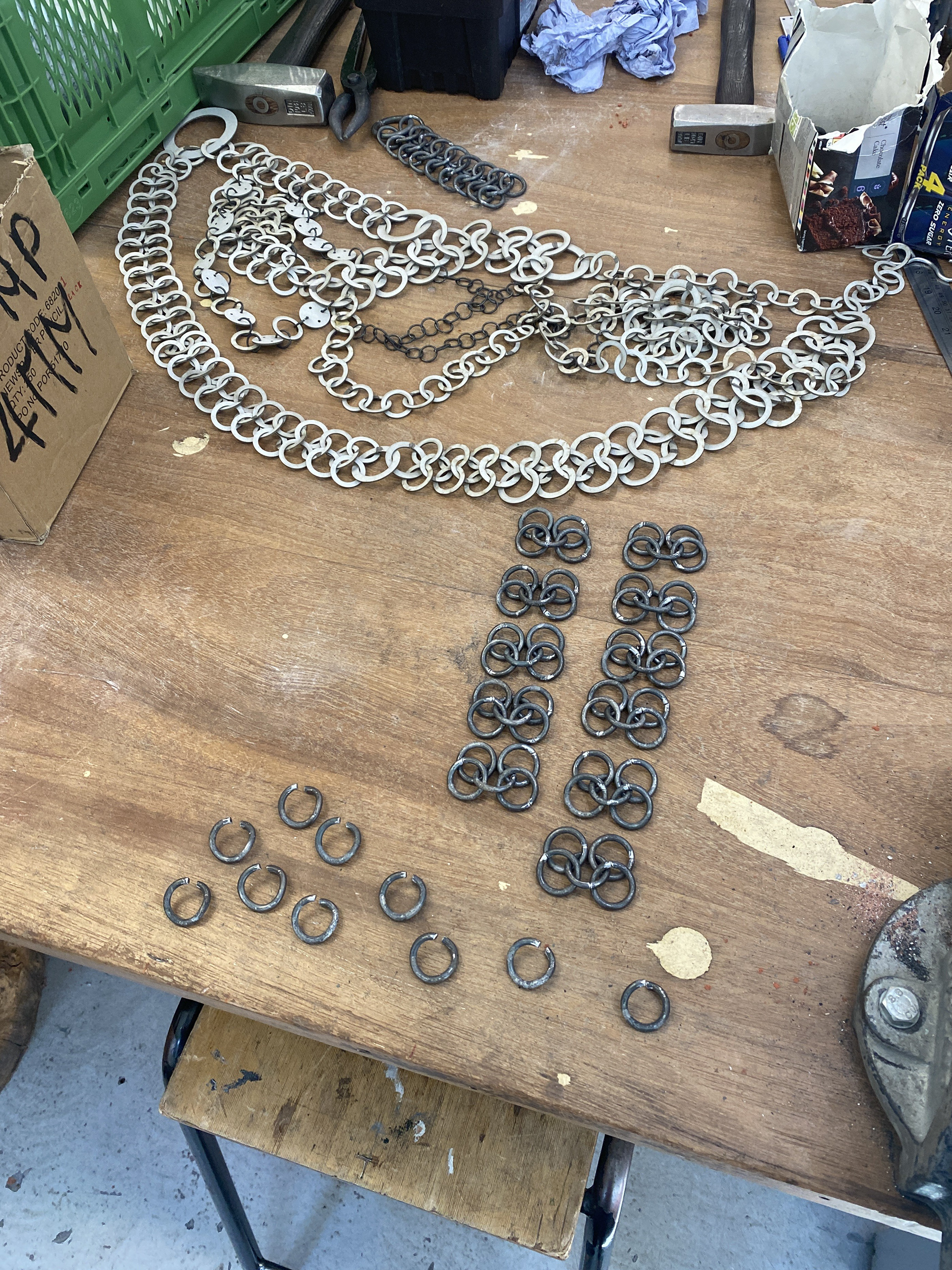
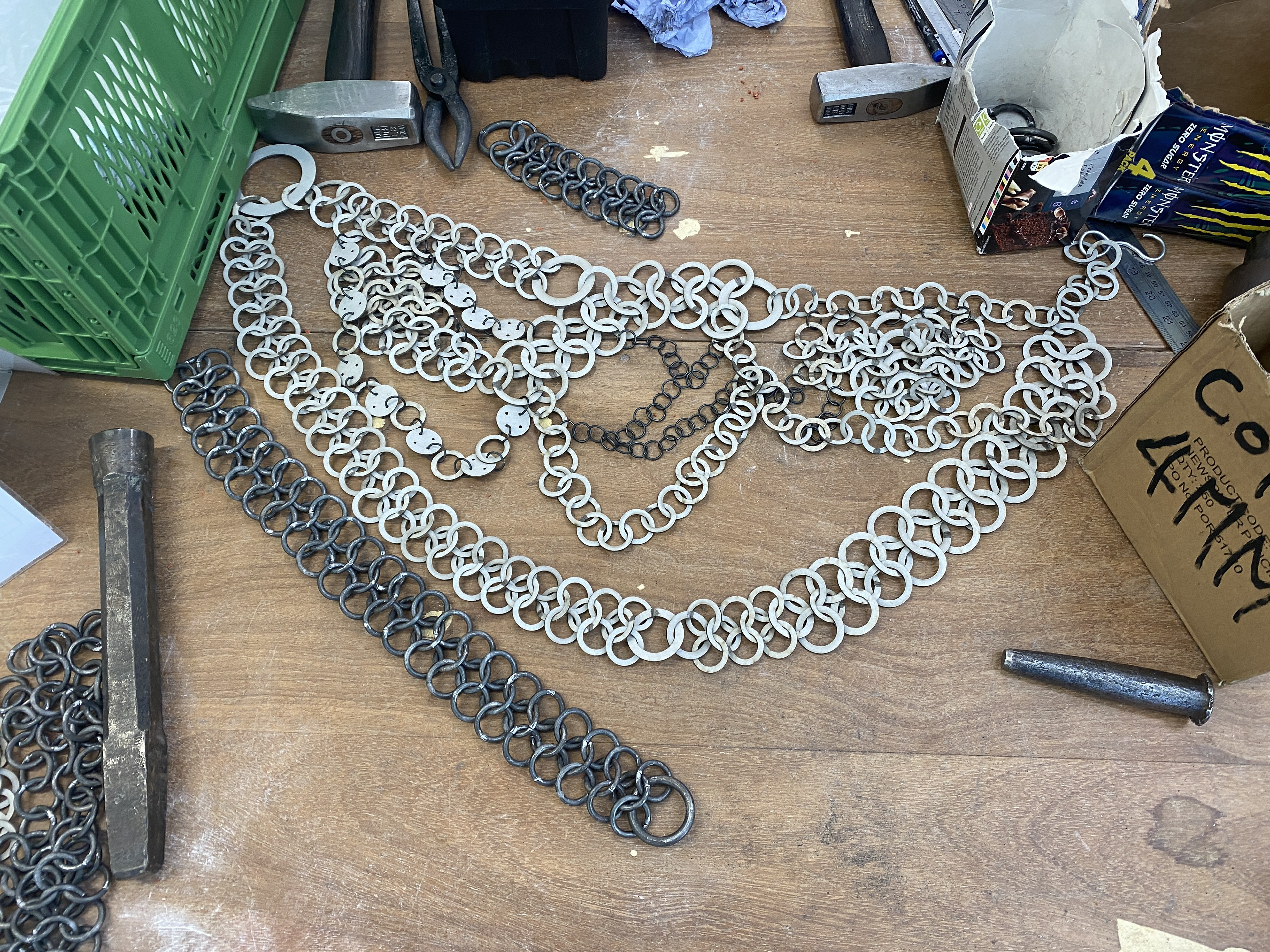

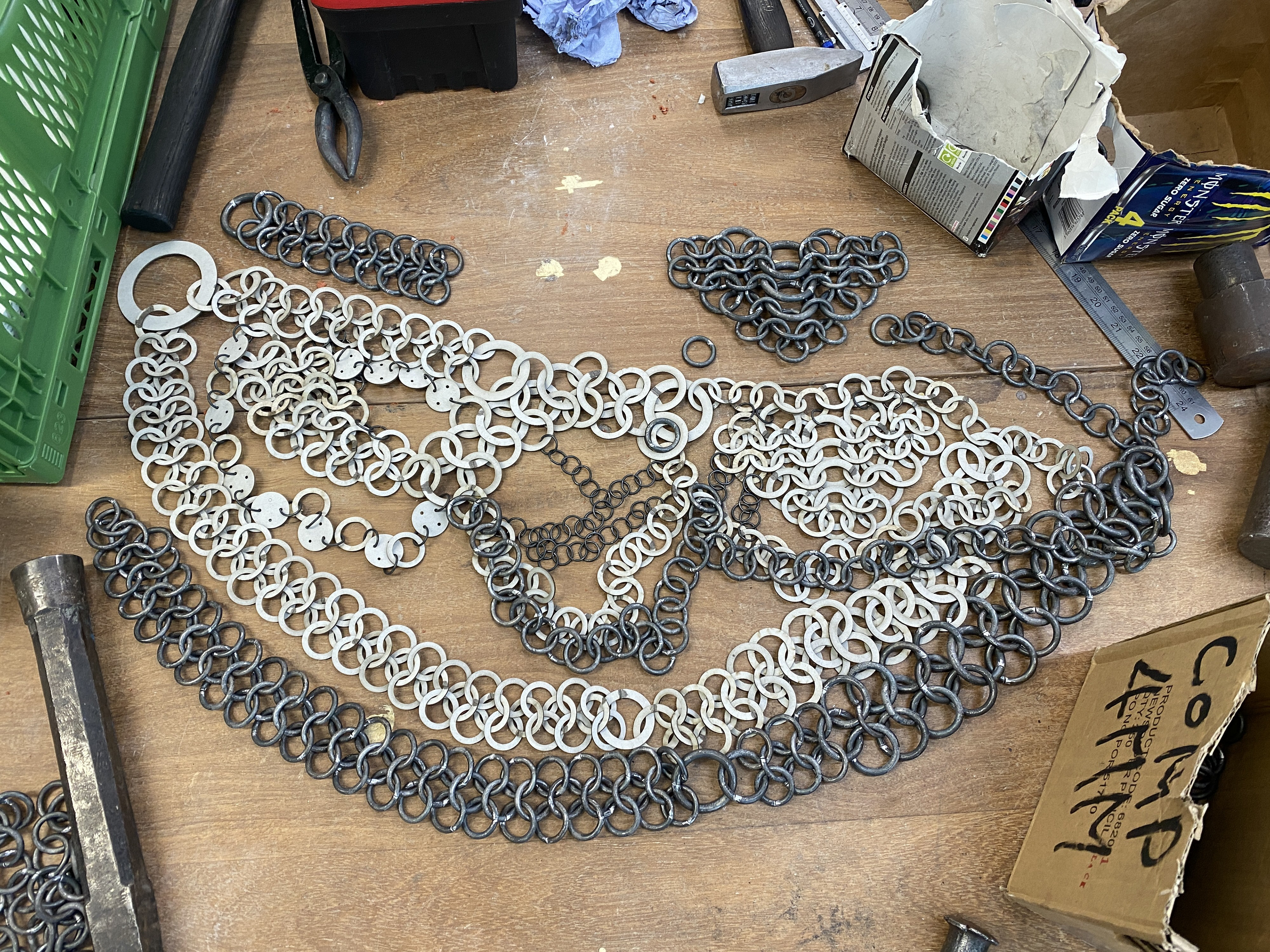
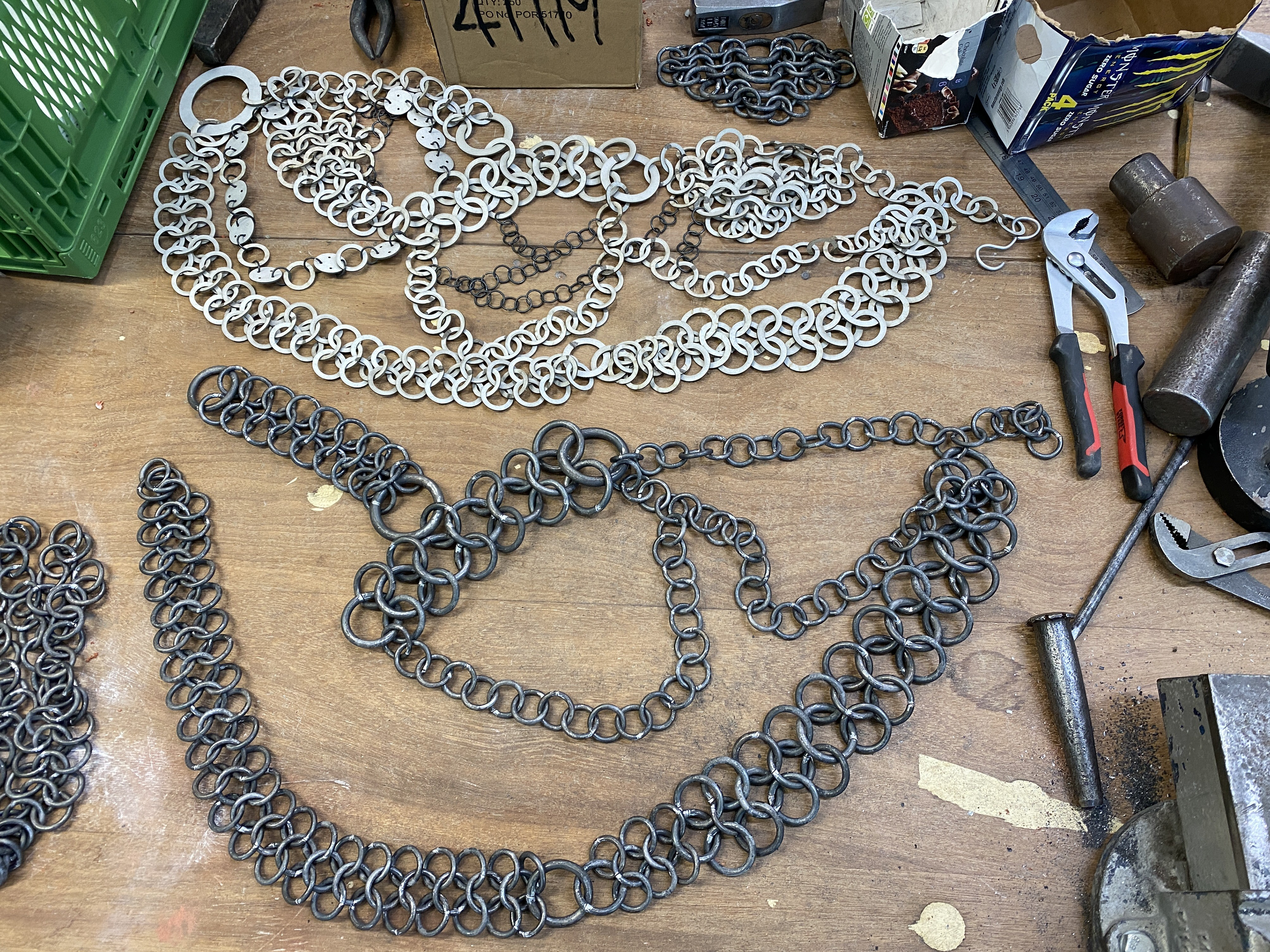


I repeated the same weaving processes, referencing my grey board model to produce the overskirt.
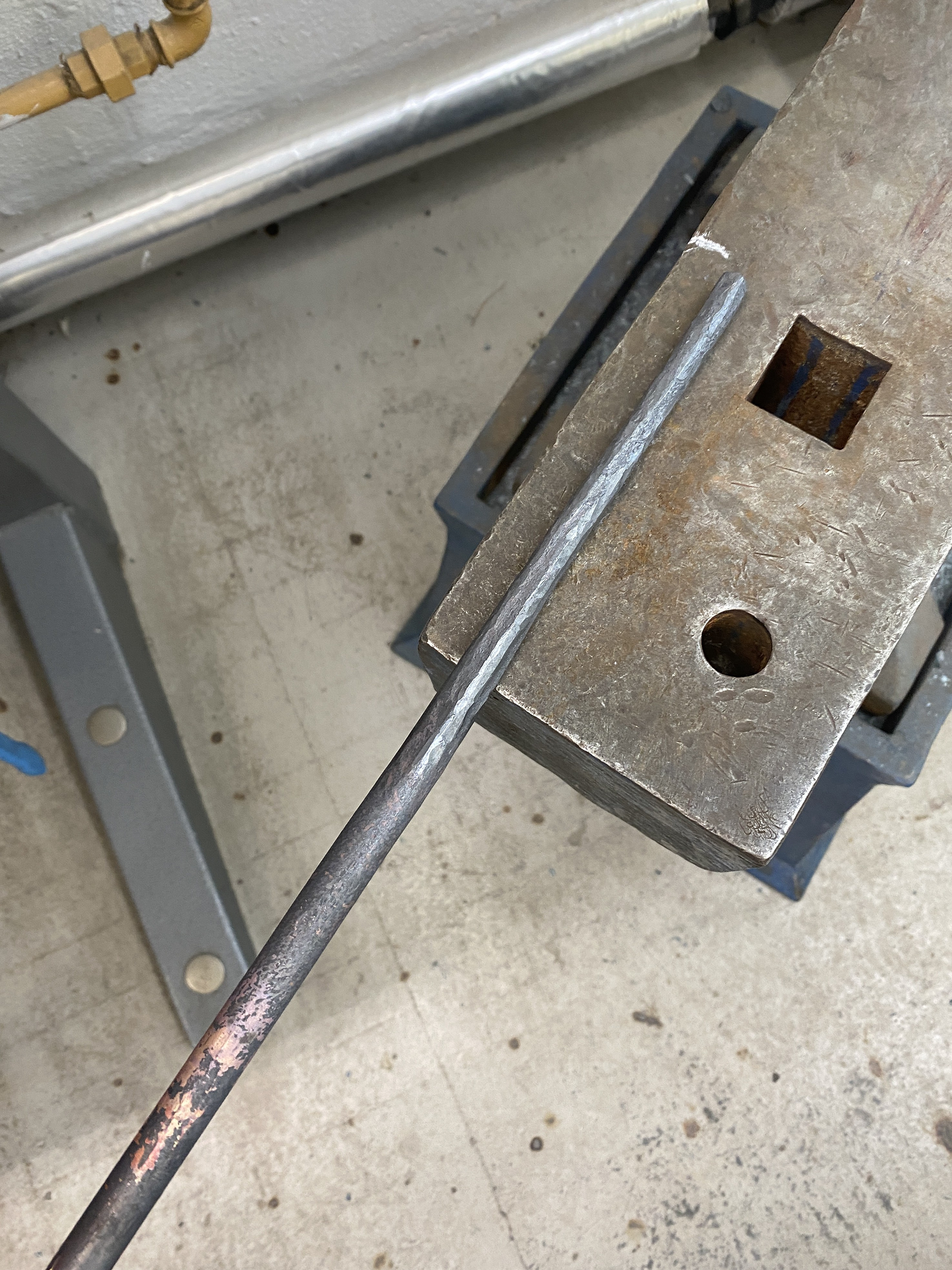
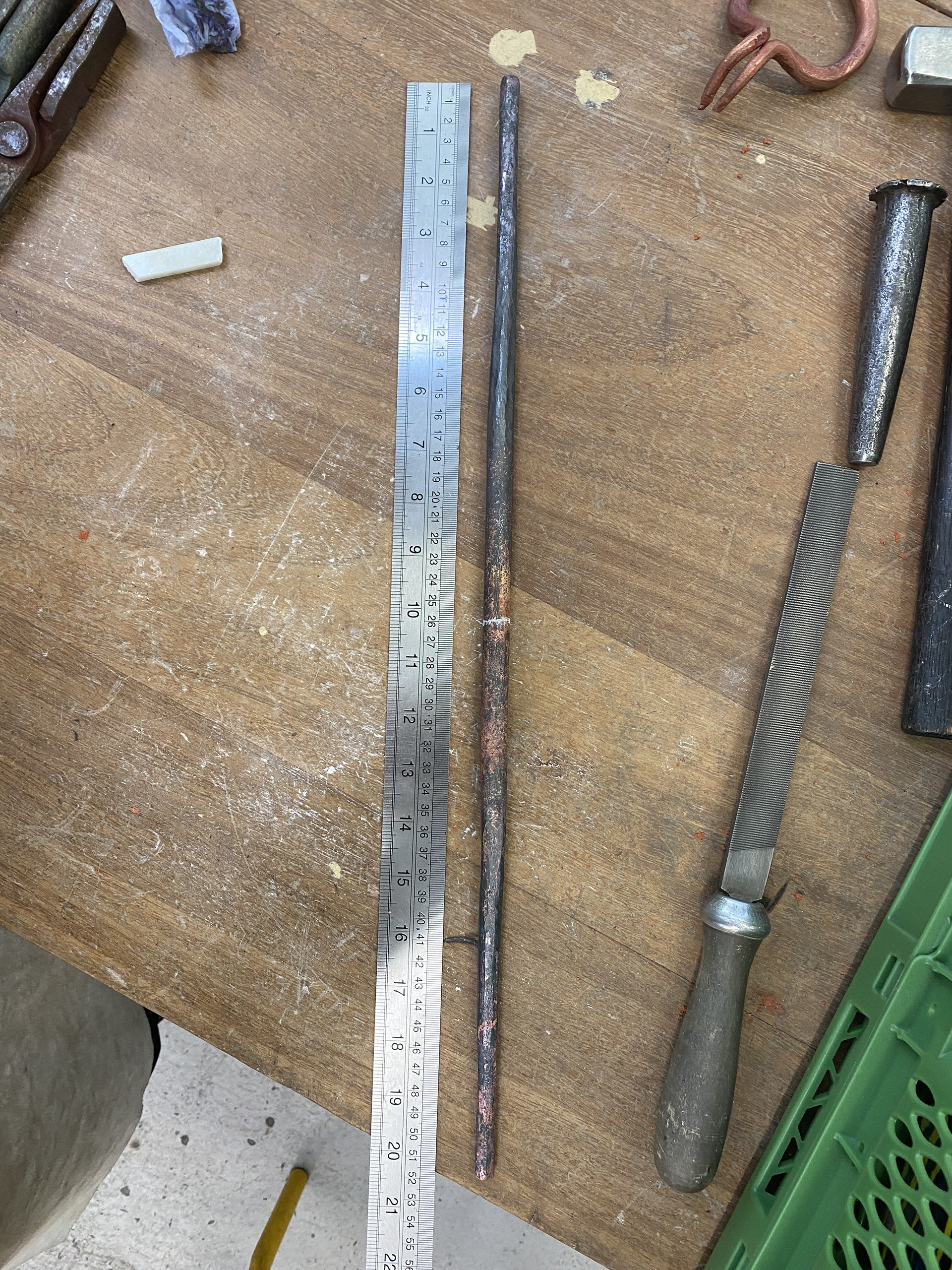


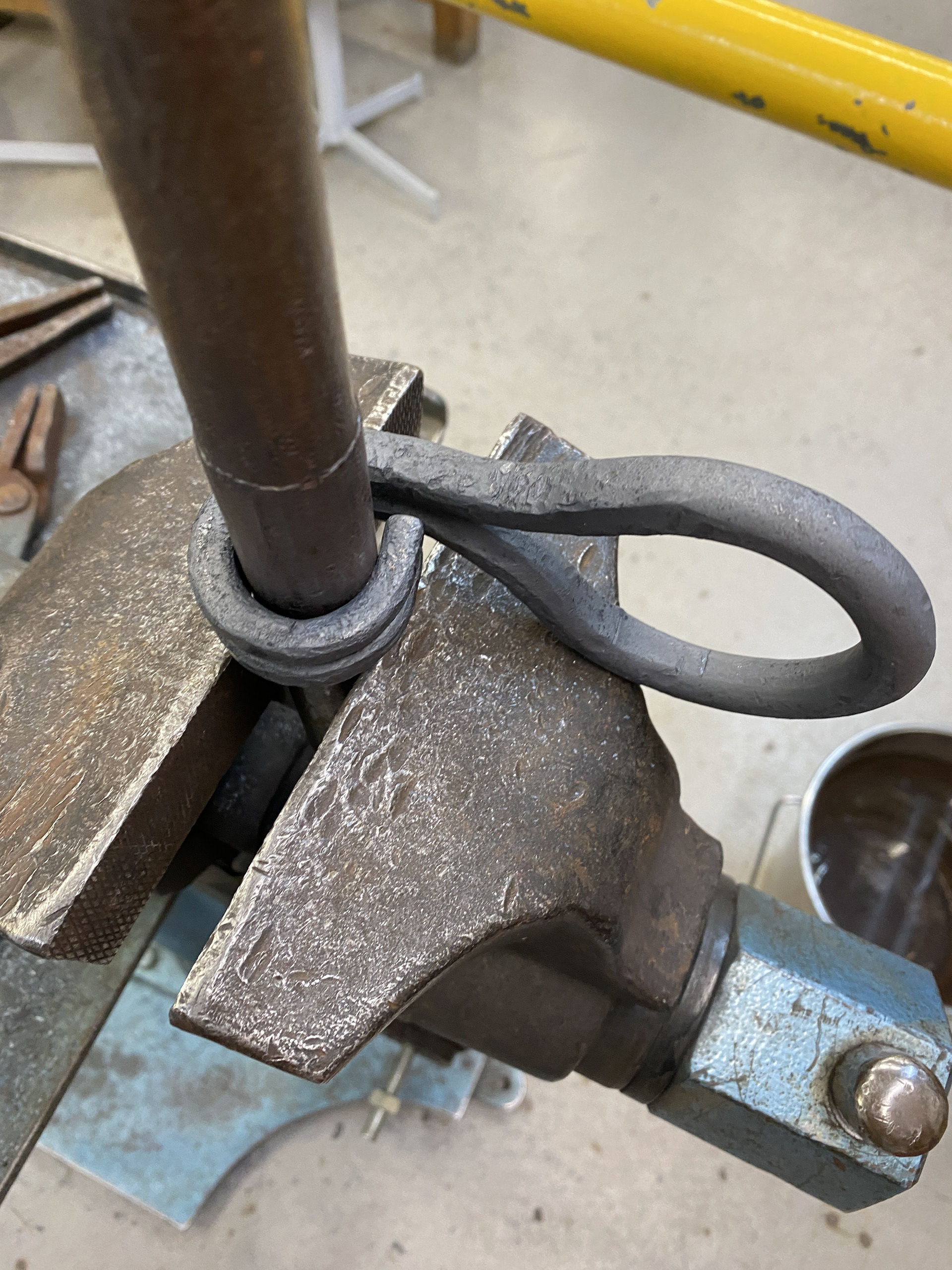
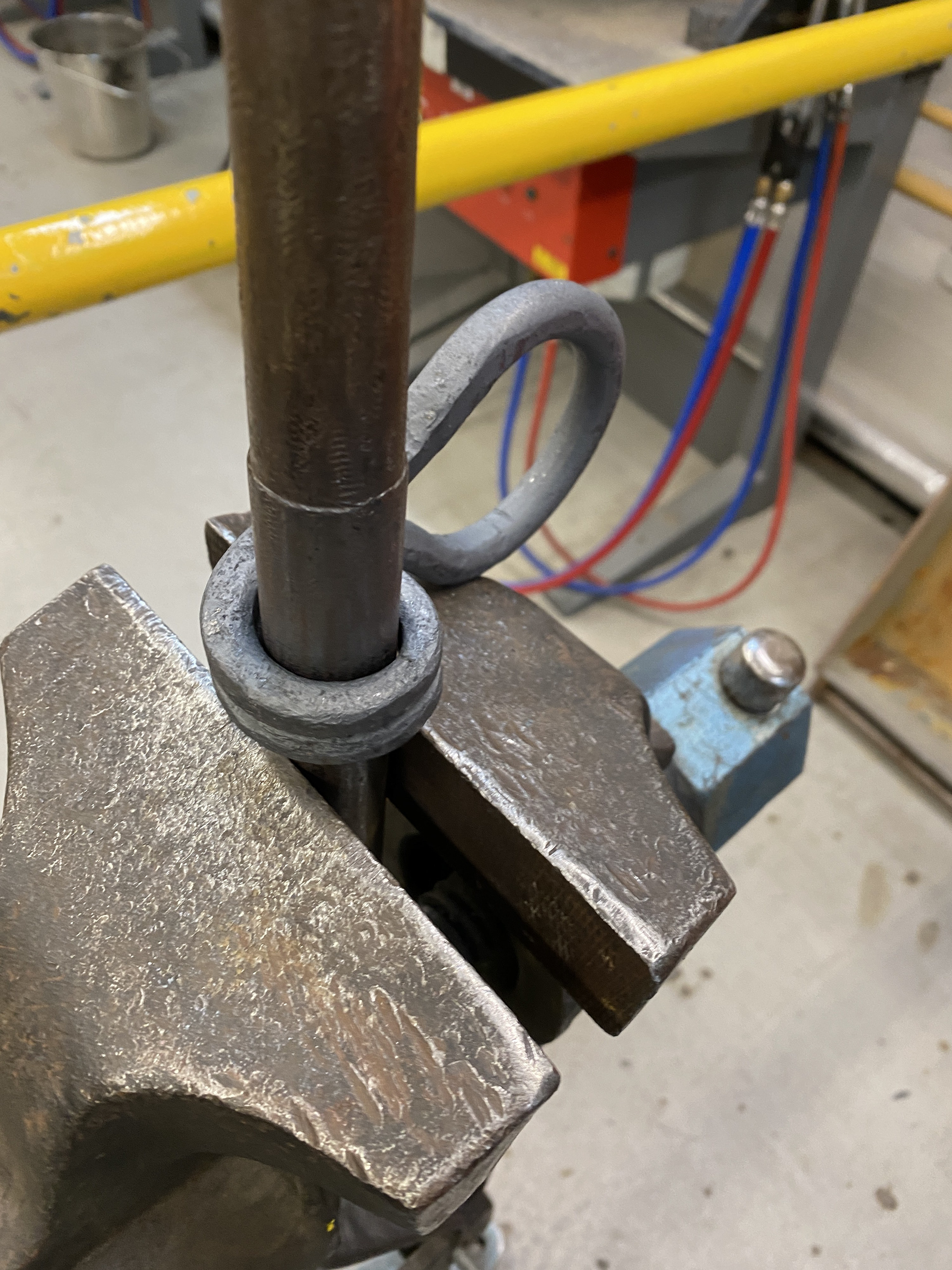
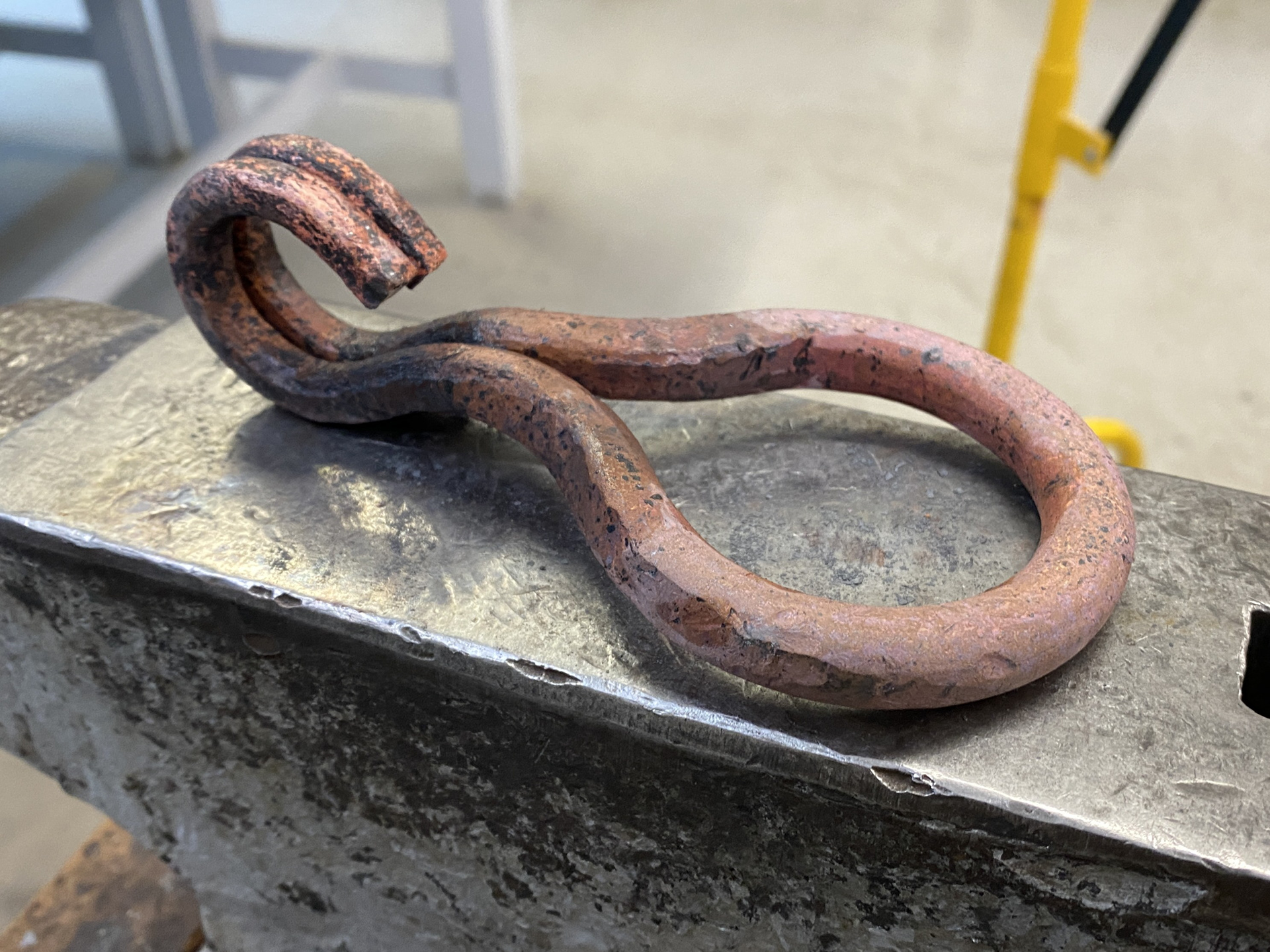
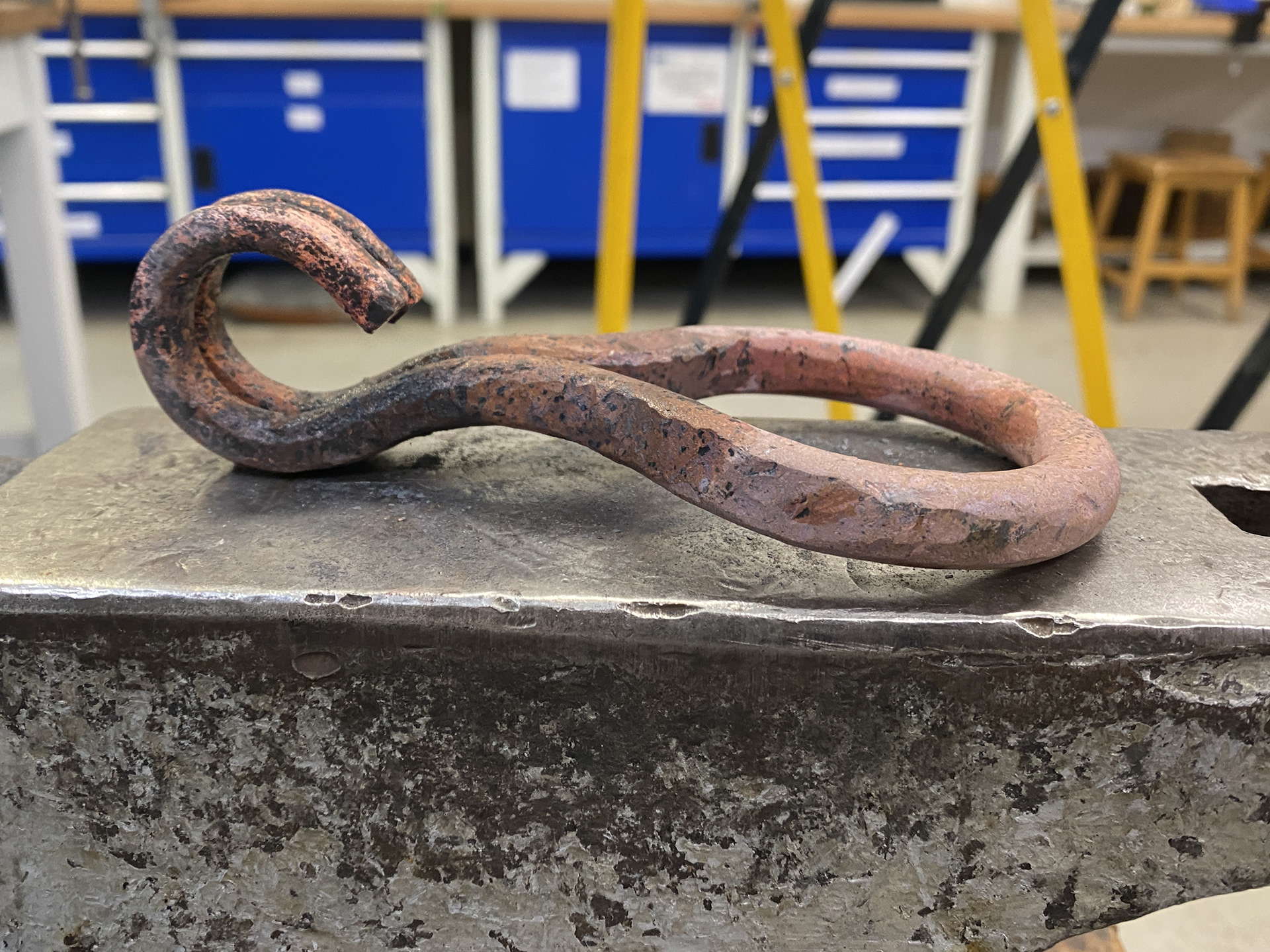
To create a harmonious design, I wanted to use the same hook and eye clasp mechanism for the overskirt. Additionally, I aimed to reintroduce a forged copper element into this piece to establish a cohesive design language across the collection. Drawing inspiration from previous forged copper clasps and the smaller steel hooks I had crafted for other pieces, I developed this design.
Since I was confident in my ability to replicate the manufacturing process from the previous copper clasp, I felt modelling the design was unnecessary. However, I made a few adjustments, such as sizing up the stock to a 12mm bar to match the grey board model. I also modified the hook’s opening to slot comfortably into a 5mm link.
Transfix
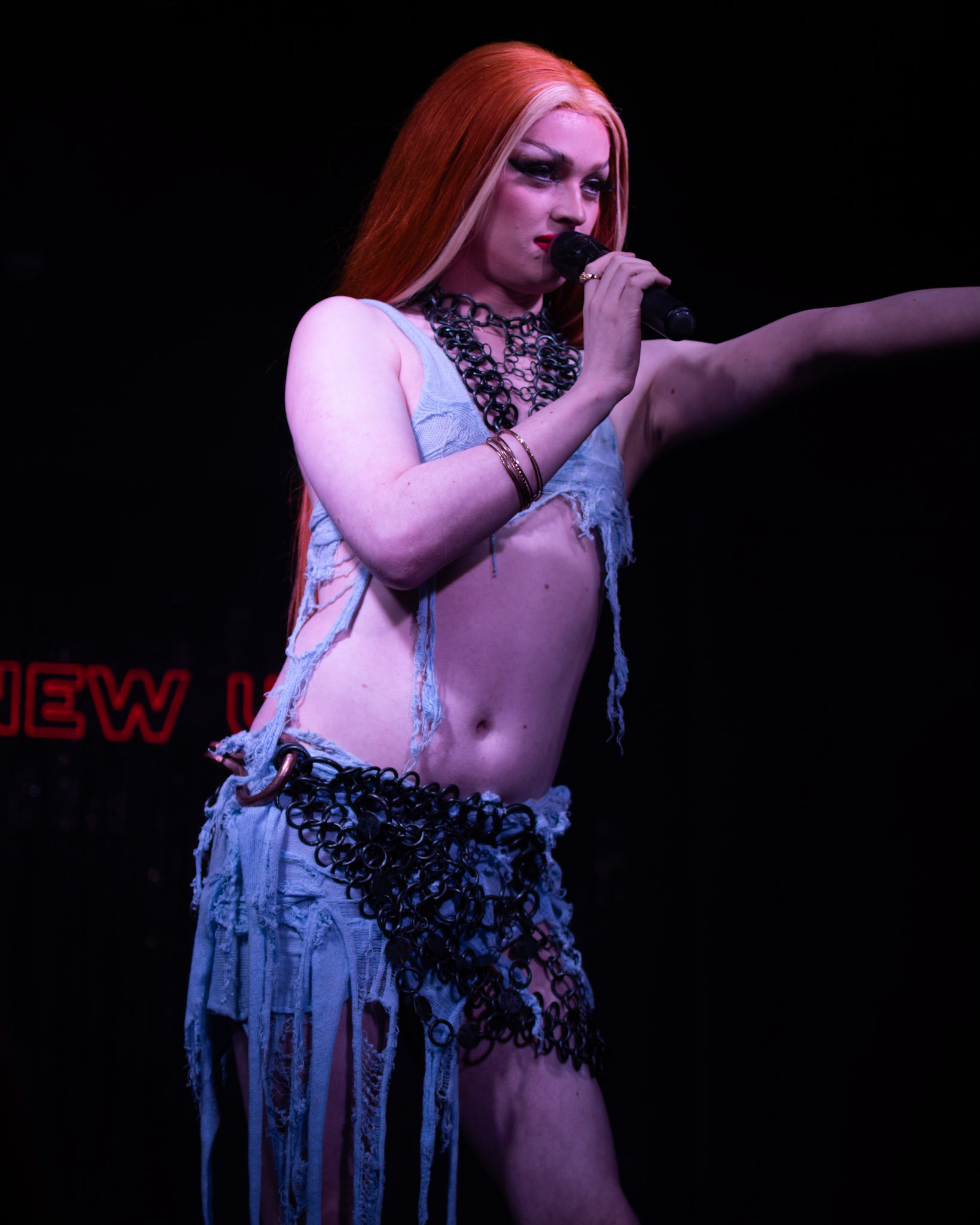
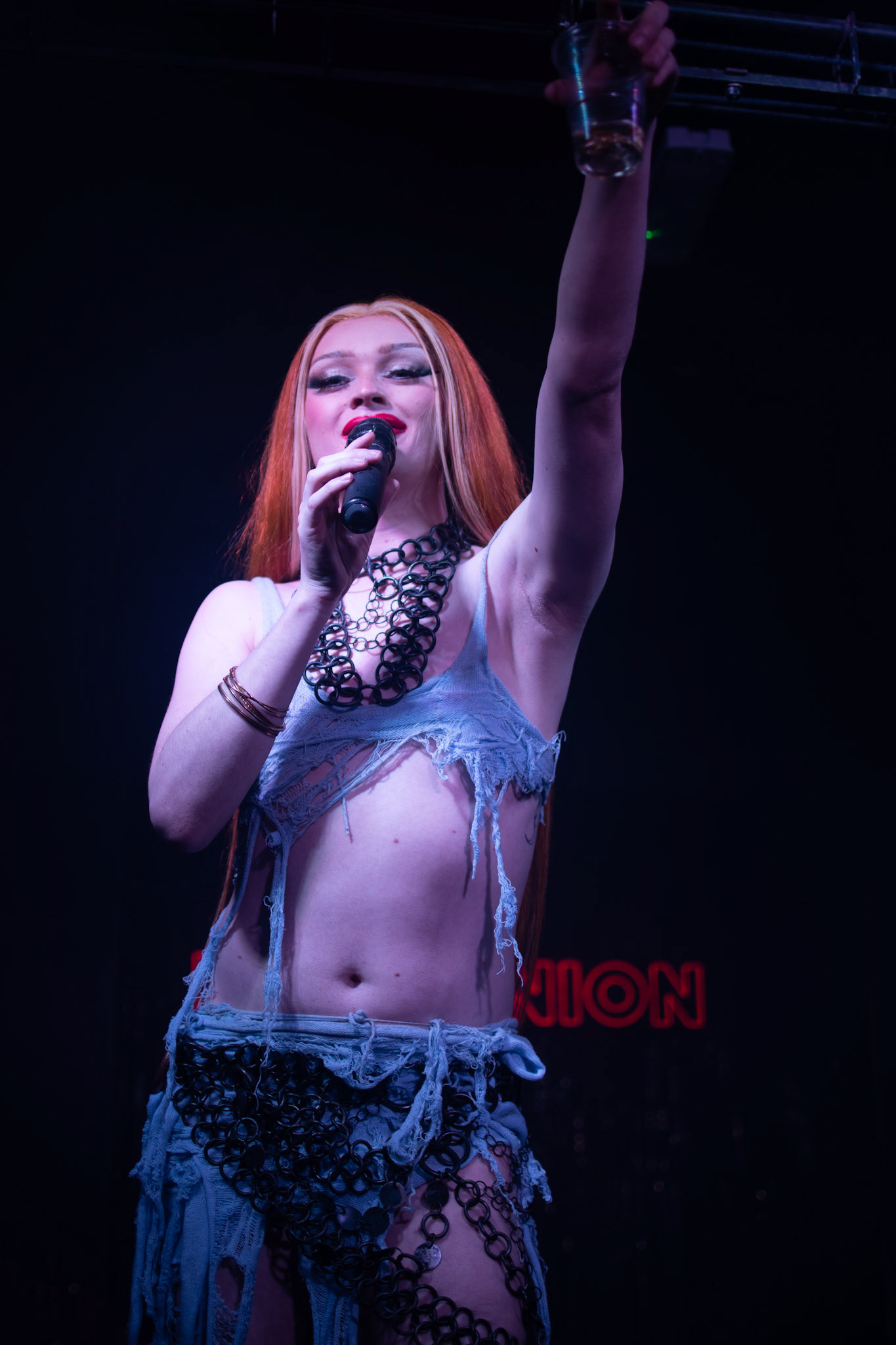

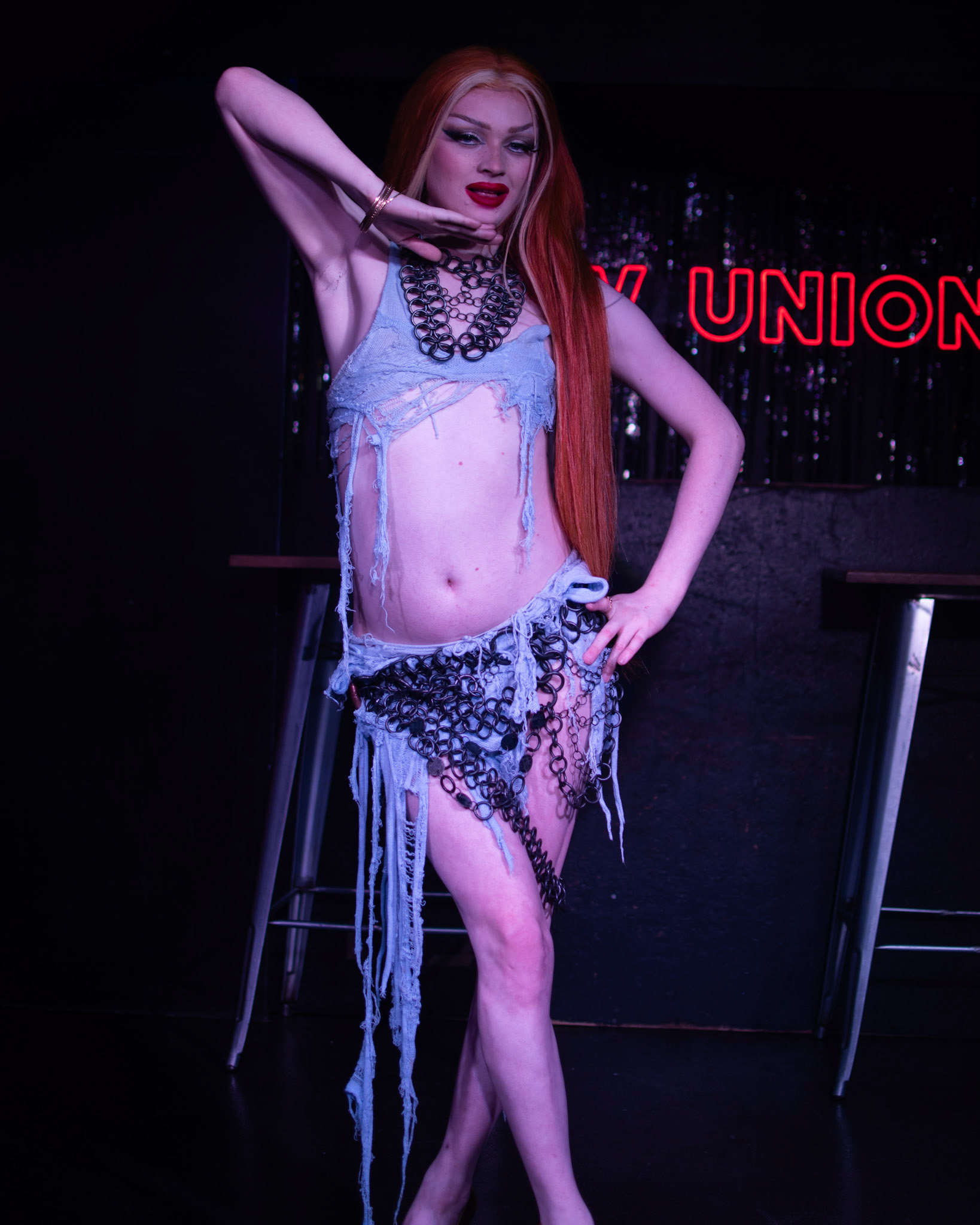
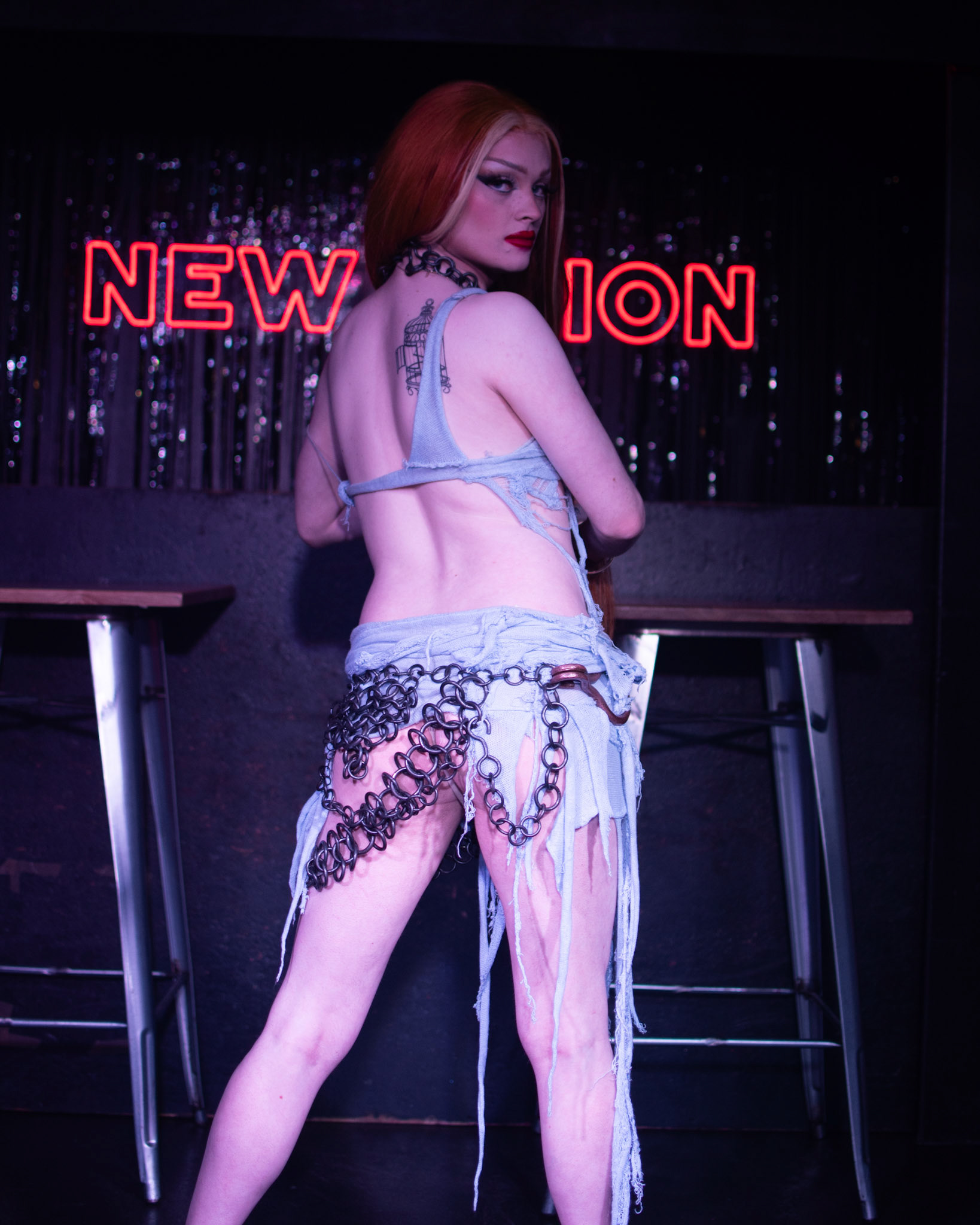
Once I had completed the work, I had the opportunity for Angel to wear the piece during her drag show Transfix. This is an all trans drag show she host every month in New Union, Gay Village. This was one way of increasing my exposure and placed my work directly in front of other drag queens and the general public that I may want to work with in the future.


